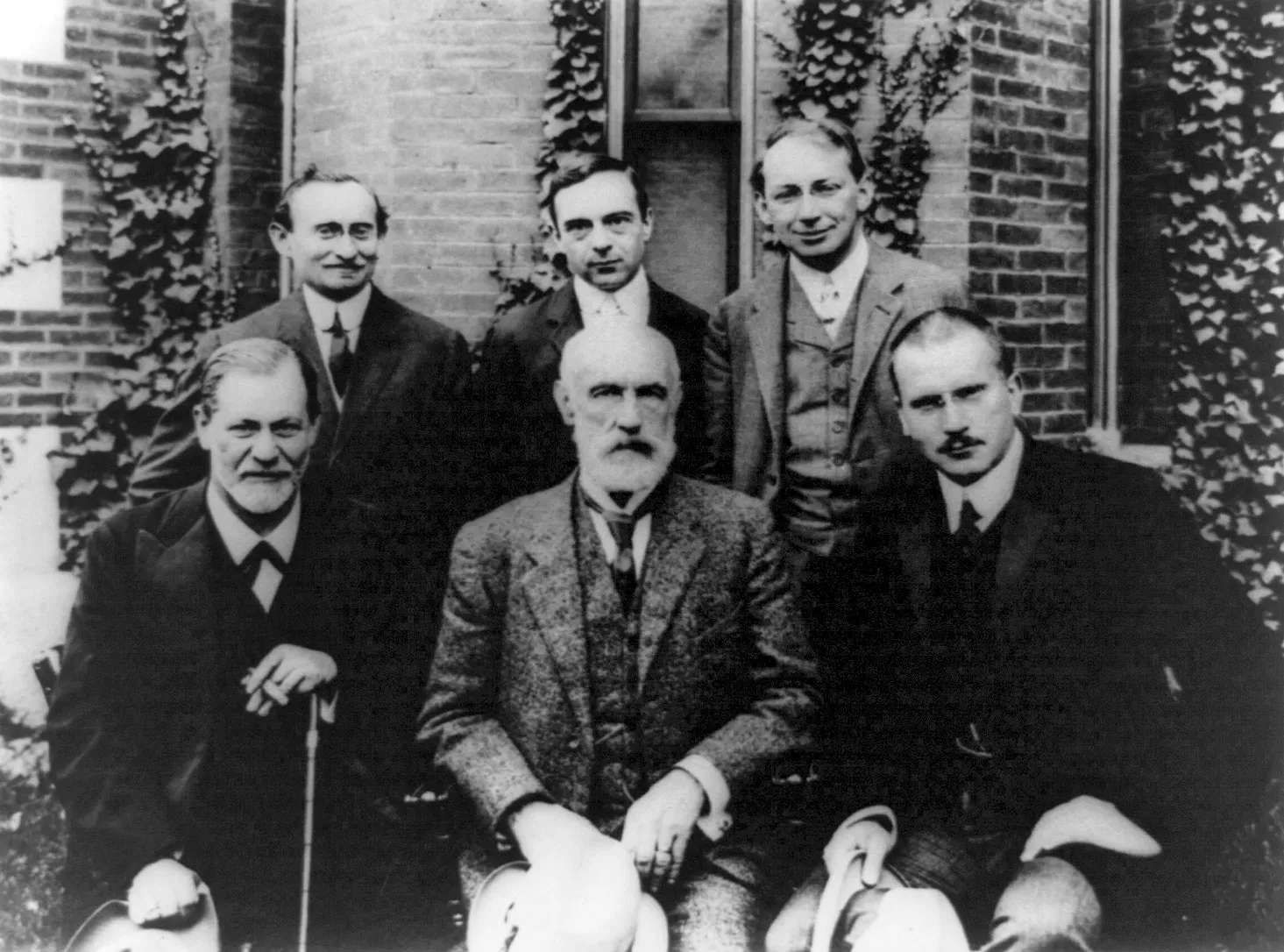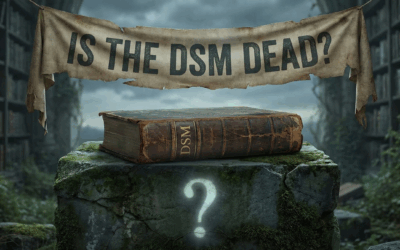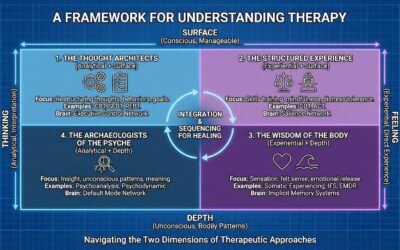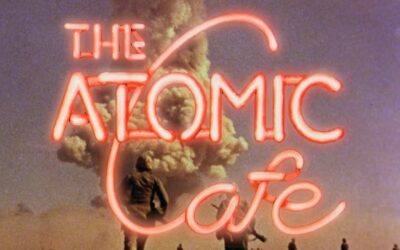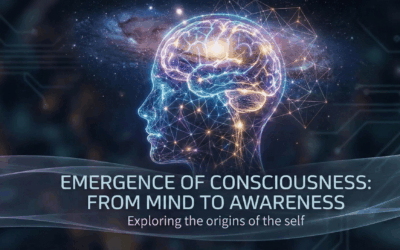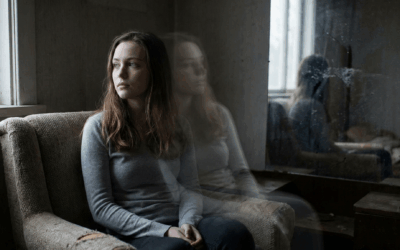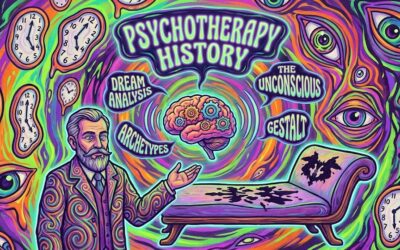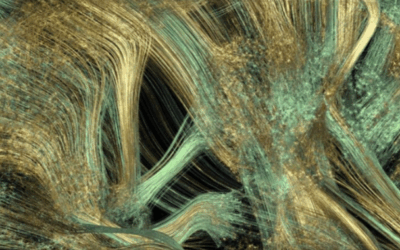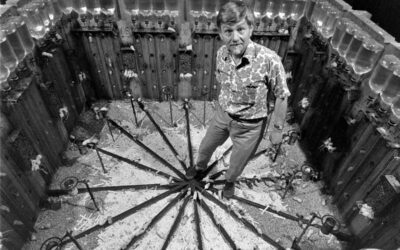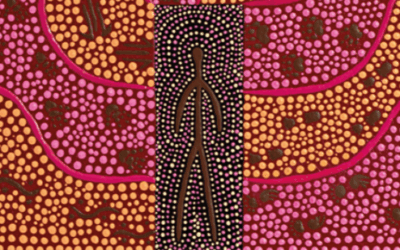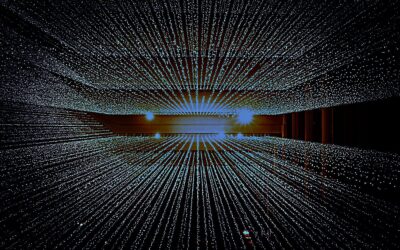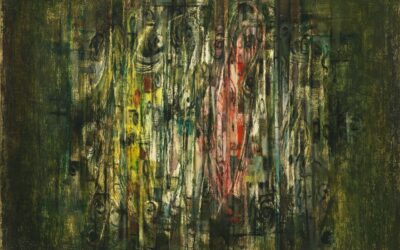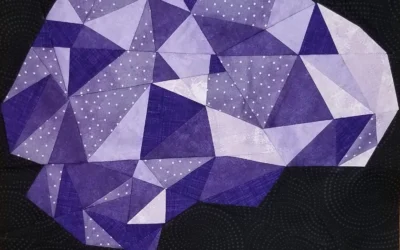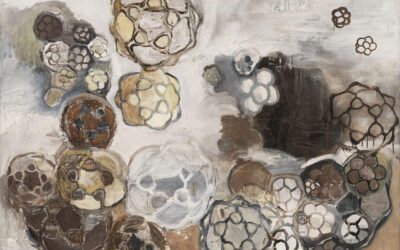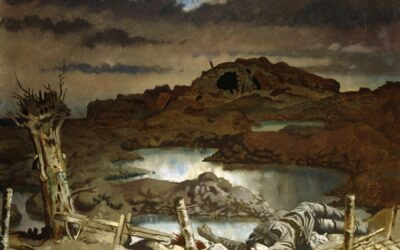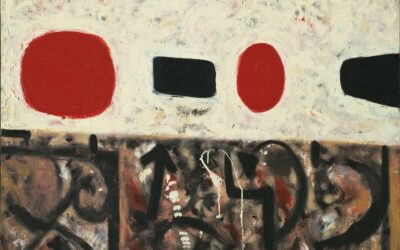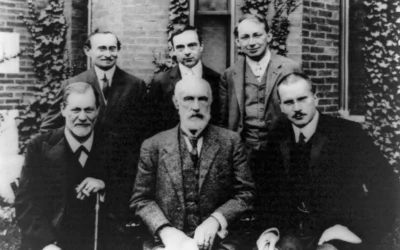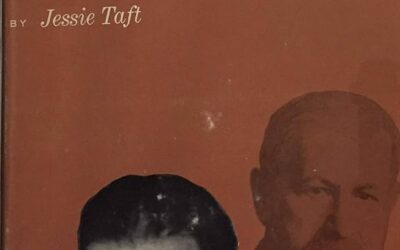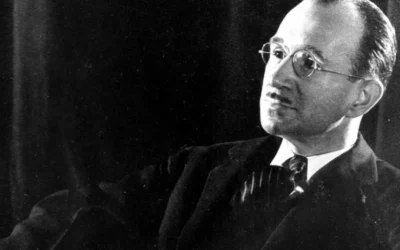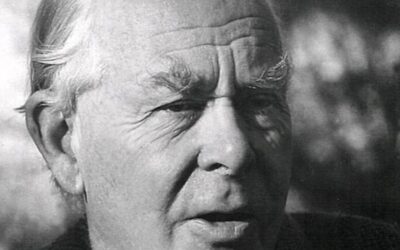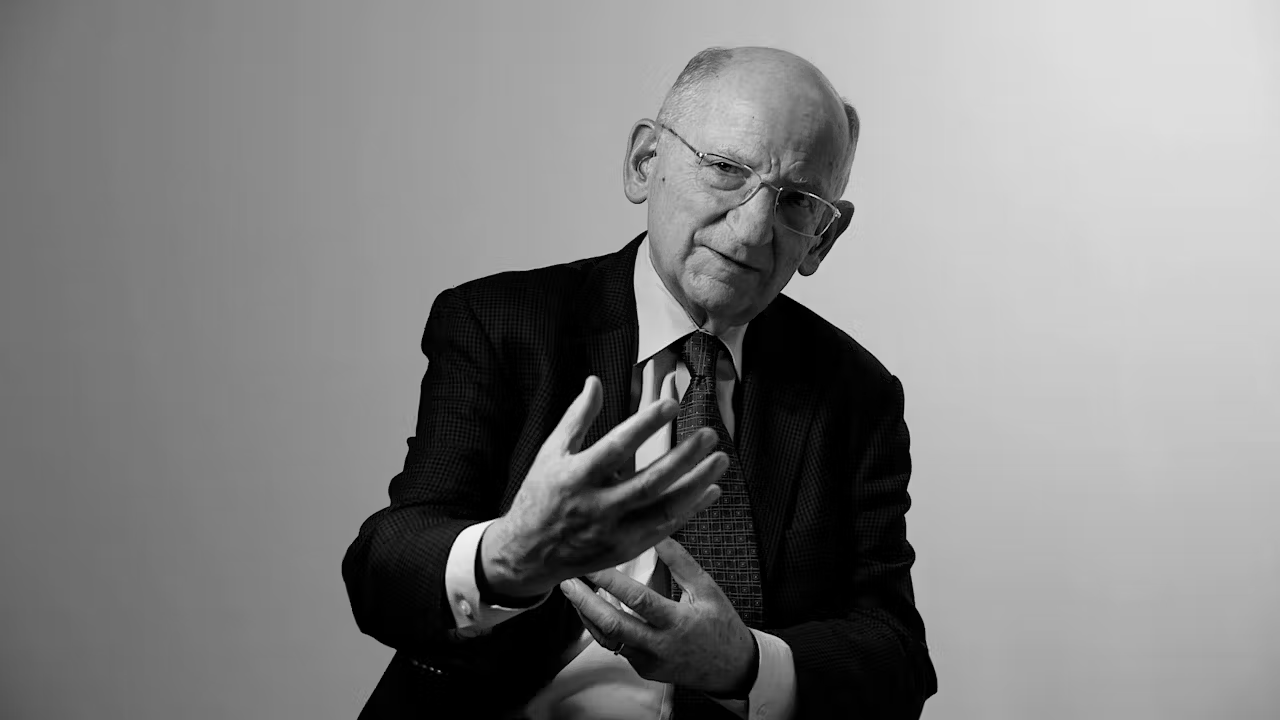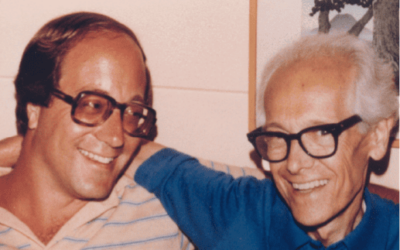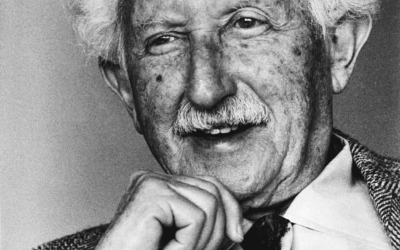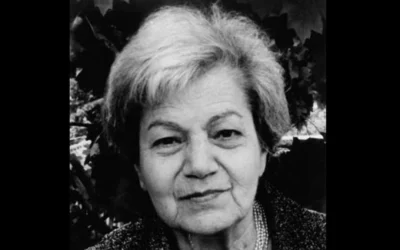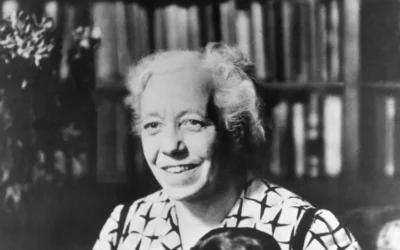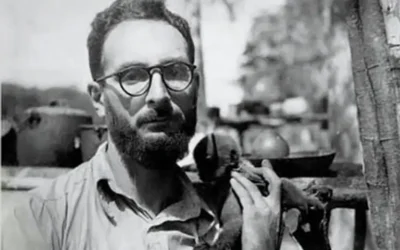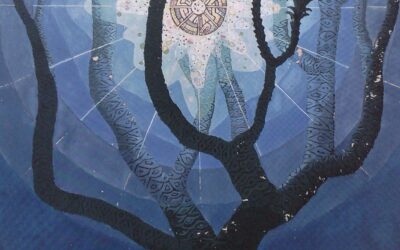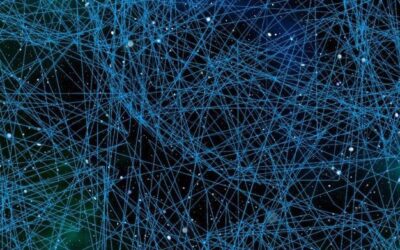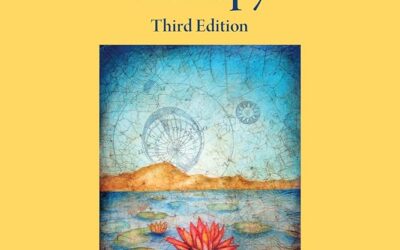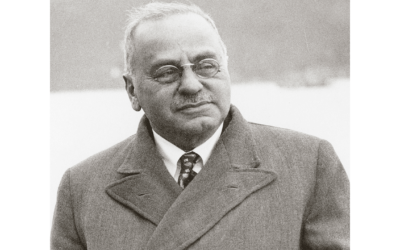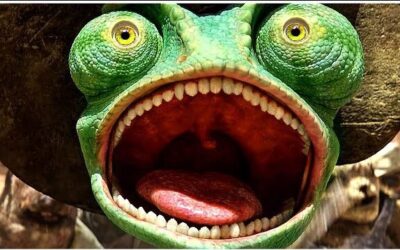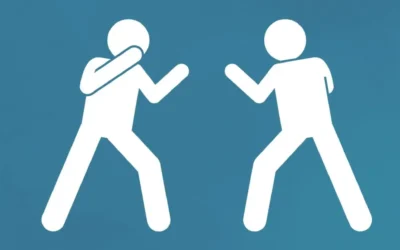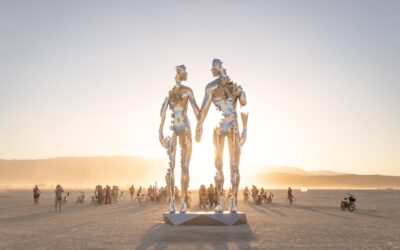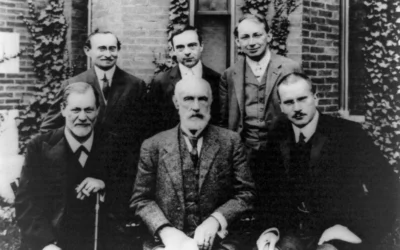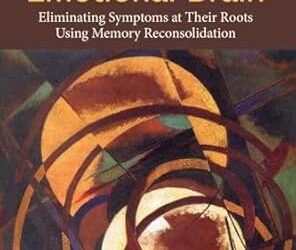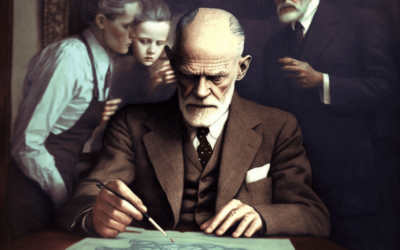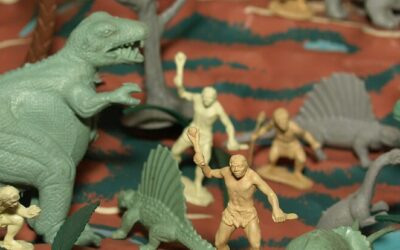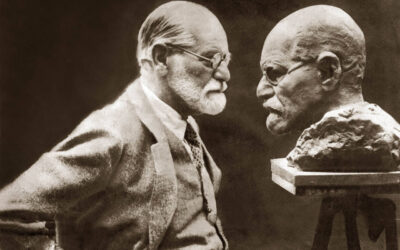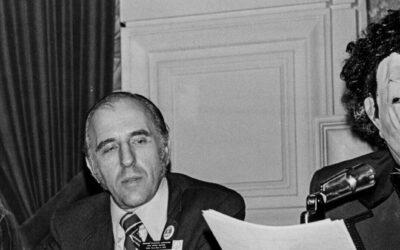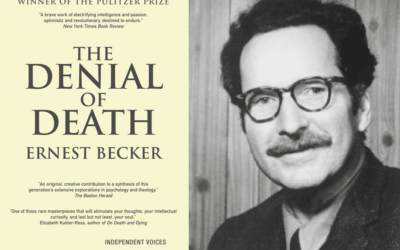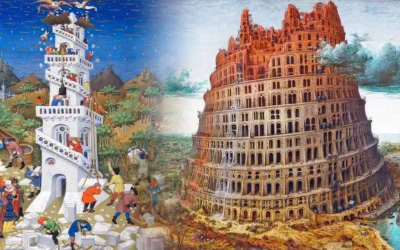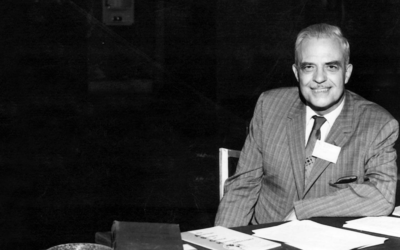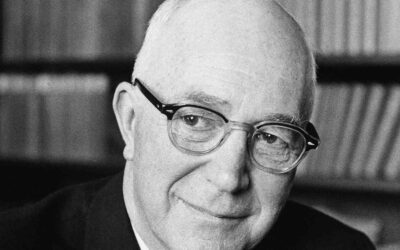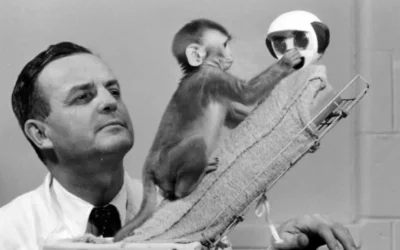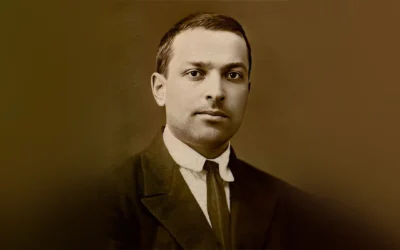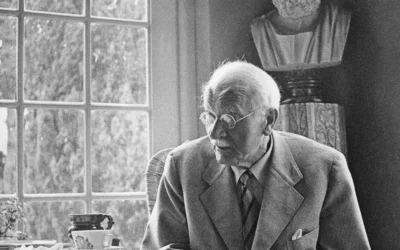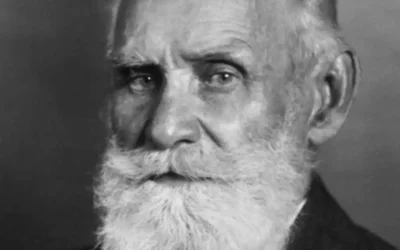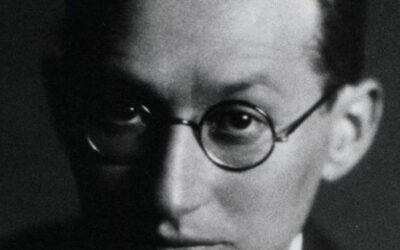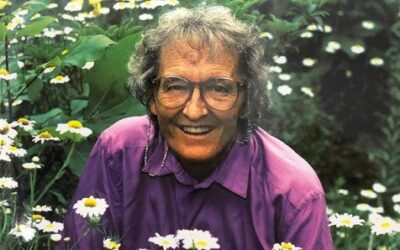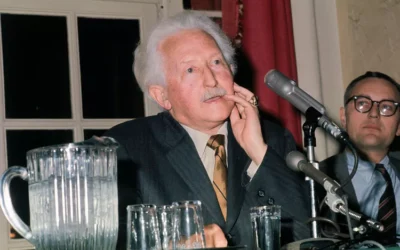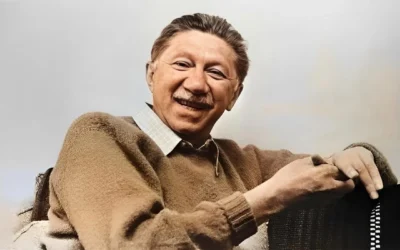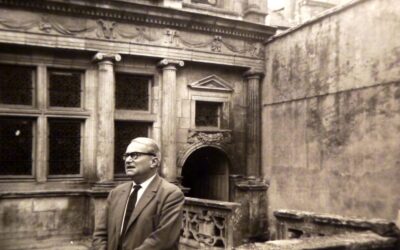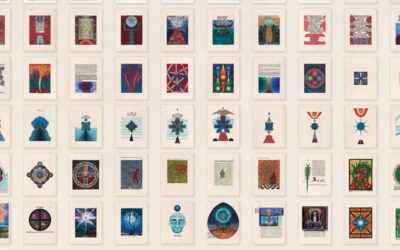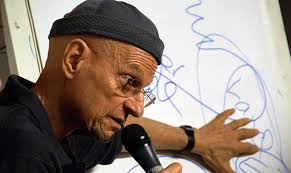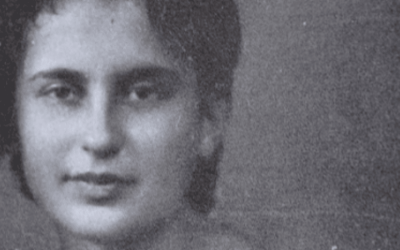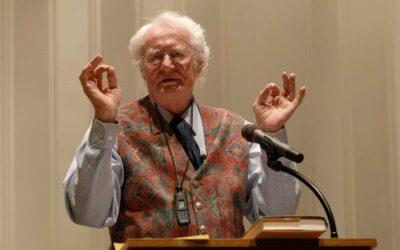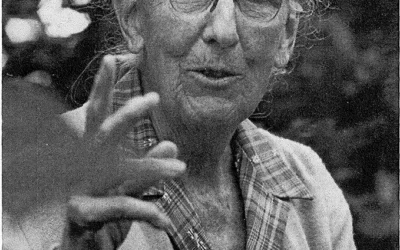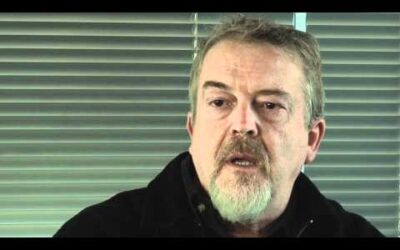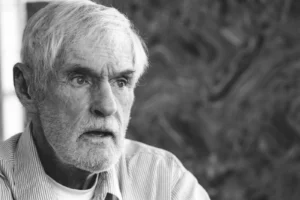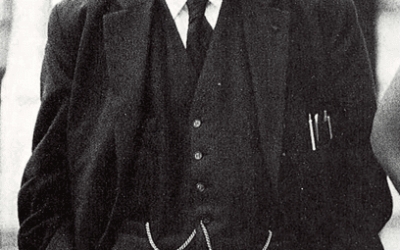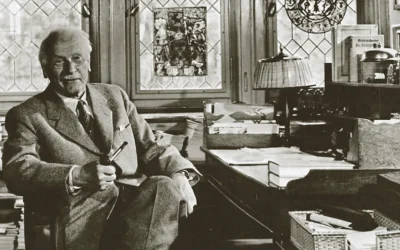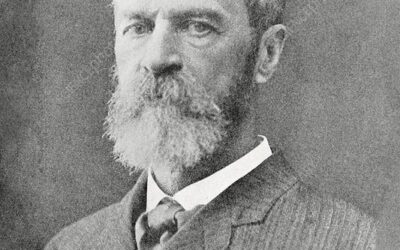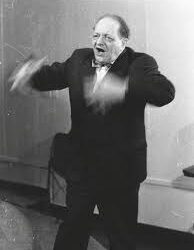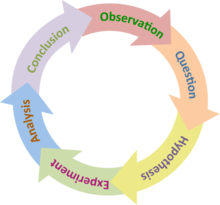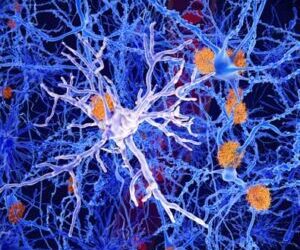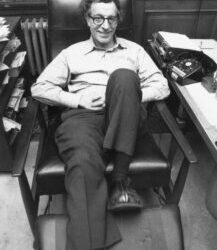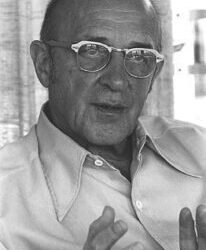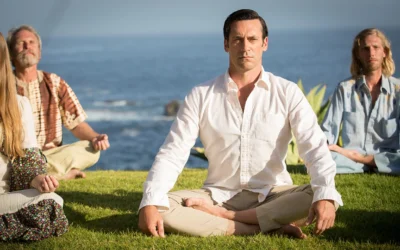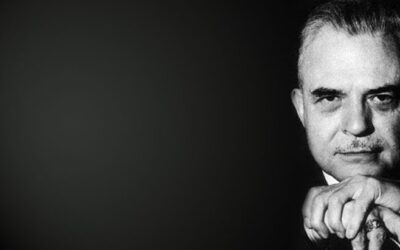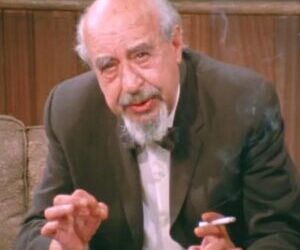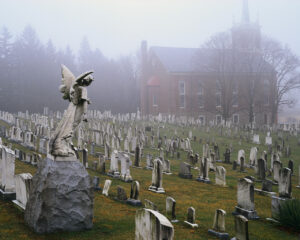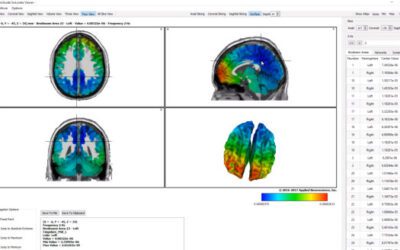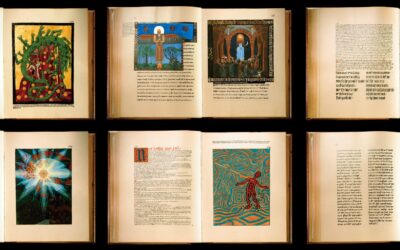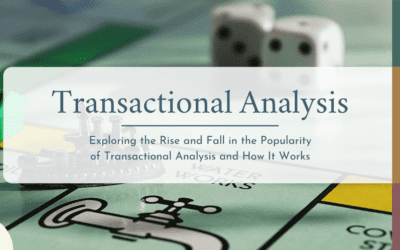A Critical Investigation into the Document That Defines American Mental Health—and Why It May Have Already Failed By Joel Blackstock, LICSW-S | Clinical Director, Taproot Therapy Collective Contents Introduction: The Controversial Bible Part I: The History of a Document in Crisis Part II: The Anti-Psychiatry Assault and the Crisis of Legitimacy Part III: The Bureaucratic Counter-Revolution—DSM-III and the Checklist Part IV: DSM-IV and the Failed Promise of the "Germ Theory" Part V: The Three False...
History of Psychology: From Ancient Wisdom to Modern Practice
Tracing the Evolution of Mental Health Understanding Through Time
Welcome to Taproot Therapy Collective’s exploration of psychology’s rich historical development, from ancient philosophical inquiries into human nature to contemporary neuroscience research. Our history of psychology content examines how different eras, cultures, and thinkers have shaped our understanding of mental health, consciousness, and therapeutic healing.
What You’ll Find in These Articles
Our historical psychology articles trace major developments from ancient Greek and Roman approaches to mental illness through medieval spiritual healing traditions, Enlightenment rational approaches, and the emergence of modern psychological schools. We explore how figures like William James, Sigmund Freud, Carl Jung, and B.F. Skinner revolutionized mental health understanding while examining lesser-known contributors whose work influences contemporary practice.
You’ll discover how historical events, cultural shifts, and scientific discoveries shaped psychological theories while learning about forgotten approaches that are finding new relevance in modern therapy. We examine both progress and mistakes in psychology’s development, including harmful practices that remind us to remain humble about current knowledge.
Connecting Past and Present
These pieces show how historical insights inform the therapeutic approaches detailed on our main services page, from understanding psychoanalytic foundations underlying modern depth work to seeing how behaviorist research shapes contemporary evidence-based practices explored in our psychology and research section.
We explore recurring themes across psychological history, patterns of scientific revolution and paradigm shifts, and how ancient wisdom traditions continue influencing contemporary therapeutic innovation.
Regional Mental Health History
Our articles often examine Southern and Birmingham mental health history, from historical treatments and attitudes to the region’s contributions to psychological research and the impact of social movements on local mental health understanding and practice.
Contact Taproot Therapy Collective: 📍 2025 Shady Crest Dr. Suite 203, Hoover, AL 35216
📞 (205) 598-6471
🌐 www.GetTherapyBirmingham.com
🎧 Podcast: gettherapybirmingham.podbean.com
Discover + Heal + Grow with Taproot Therapy Collective – Birmingham’s resource for understanding psychology’s historical development and its influence on contemporary mental health practice.
Understanding How the Different Types of Therapy Fit Together
History of Psychotherapy, Jungian Therapy and Depth Psychology, Therapeutic Approaches and Techniques for Therapists
You've tried therapy before. Maybe it helped a little. Maybe you spent months talking about your childhood without anything changing. Maybe you learned coping skills that worked until they didn't. Maybe the therapist was nice but you left each session feeling like something essential was being missed. Here's what nobody told you: different therapies target different parts of your brain. The therapy that transforms one person's life might be completely wrong for another—not because either therapy is bad, but...
When the State Became the Patient: A Clinical Examination of America’s Most Radical Psychological Experiments
Alternative Medicine and Holistic Health, History of Psychotherapy, Psychology of Politics, Psychology Topics and Articles
An exploration of the dark laboratories where psychology, paranoia, and national security collided—and what these forgotten experiments reveal about the ethics of the therapeutic profession. The Fever Dream of Cold War Psychology For those of us who practice psychotherapy today, there exists a troubling lineage we rarely discuss. The techniques we use—hypnosis, behavioral conditioning, pharmacological intervention—were not developed solely in the peaceful halls of academia. Many were forged in classified...
Psychotherapy’s Greatest Feuds: A Critical History of the Great Schisms in Psychotherapy
History of Psychotherapy, Psychology, Psychology Topics and Articles
The history of psychotherapy isn't a clean scientific progression. It's a bloodbath. Fifteen feuds that shaped everything you do in the therapy room—and the verdict on who was actually right. The Dialectic of the Cure The history of psychotherapy reads less like a scientific logbook and more like a dynastic tragedy. From the smoke-filled salons of Vienna's Berggasse 19 to contemporary American academia, the evolution of mental health treatment has been driven not merely by data, but by the collision of titan...
Insights into Therapy Through Quantum Neuroscience
Evidence Based Practice in Therapy, History of Psychotherapy, Neuroscience and the Brain for Therapists, Phenomenology and Existential Psychology
Something extraordinary is happening in consciousness research right now. After decades of incremental progress and philosophical stalemate, 2025—designated by the United Nations as the International Year of Quantum Science and Technology—has delivered a cascade of findings that fundamentally challenge how we understand the nature of mind, awareness, and subjective experience. For those of us working in psychotherapy, these aren't merely academic curiosities. The question of what consciousness is—how it emerges,...
The Metamorphosis of the Sufferer: From Neurotic Soul to Digital User
History of Psychotherapy, Neuroscience and the Brain for Therapists, Phenomenology and Existential Psychology, Psychology Topics and Articles
From “neurotic soul” to “digital user”: How insurance companies, Big Pharma, and Silicon Valley systematically dismantled the depth of psychotherapy—and why the BetterHelp scandal was just the beginning. A critical history for therapists who refuse to become technicians.
The Neuroscience of Disassociation
Alternative Medicine and Holistic Health, Brainspotting in Alabama: Revolutionary Trauma Therapy for Deep Healing, Evidence Based Practice and Research Psychology, Evidence Based Practice in Therapy, History of Psychotherapy
The unitary nature of consciousness is the most persistent intuition of human experience. We feel like a single protagonist in a continuous narrative. Yet, for the trauma survivor, this intuition is often a lie. As therapists, we are often the first to witness the paradox of the "fractured mind." We see clients who function with high competence in their careers ("Apparently Normal Personality") while simultaneously harboring parts frozen in the terror of decades-old trauma. Until recently, our understanding of...
The Architecture of the Soul and the Machine: A Critical History and Future of Psychotherapy
Alternative Medicine and Holistic Health, History of Psychotherapy, Psychology
A critical deep dive into the hidden history of psychotherapy, exploring how the personal traumas of founders like Freud and Jung collided with societal forces to shape modern mental health. Drawing on the works of Adam Curtis, James Hillman, and Sonu Shamdasani, this article traces the shift from the “architecture of the soul” to the “technocratization of care,” exposing the impact of profit motives and algorithmic logic while proposing a metamodern path forward for the profession.
The Useful Mistakes of Fringe Psychology: What We Learn When Science Gets it “Wrong”
Alternative Medicine and Holistic Health, History of Psychotherapy, Psychology
From the ‘Stoned Ape’ to the ‘Lizard Brain,’ fringe psychology is full of mistakes. But theorists like Julian Jaynes and Terence McKenna offered metaphors that still heal.
The Giants of Behavioral Psychology Lives Legacies and Clinical Foundations
History of Psychotherapy, Psychotherapy Biographies: Historical Figures in the History of Psychology
Explore the lives discoveries and lasting influence of the six giants of behavioral psychology including Pavlov Thorndike Watson Skinner Wolpe and Bandura. Learn how their groundbreaking research on classical conditioning operant conditioning systematic desensitization and social learning theory shaped modern evidence-based psychotherapy and continues to inform clinical practice today.
What is Energy Psychotherapy?
Alternative Medicine and Holistic Health, Brainspotting in Alabama: Revolutionary Trauma Therapy for Deep Healing, Color Psychology, Evidence Based Practice and Research Psychology, Evidence Based Practice in Therapy, History of Psychotherapy, Psychology
Discover energy psychotherapy, a revolutionary approach integrating ancient Eastern wisdom with modern neuroscience. Learn about somatic therapies, EFT, brainspotting, Hakomi, and other body-based treatments that address trauma at its physiological roots—offering hope when talk therapy alone isn’t enough.
Karl Friston and Carl Jung: The Unnoticed Rehabilitation
History of Psychotherapy, Jungian Therapy and Depth Psychology, Phenomenology and Existential Psychology, Philosophy for Therapists
An exploration of how Karl Friston’s Free Energy Principle and Eugene Gendlin’s Process Model provide mathematical and philosophical validation for Carl Jung’s analytical psychology, revealing that Jung’s supposedly mystical insights actually captured fundamental principles of consciousness architecture that modern neuroscience is only now beginning to understand.
The Radical Presence of Eugene Gendlin: How Felt Sensing Transforms Trauma Therapy and Political Understanding
History of Psychotherapy, Phenomenology and Existential Psychology, Philosophy for Therapists, Psychology, Symbolism and Meaning in Psychotherapy
Eugene Gendlin’s revolutionary work on the felt sense reveals how trauma disrupts the body’s natural flow of experiencing and how political oppression shapes what we can feel and think. His Focusing method offers both a powerful trauma therapy approach and a framework for understanding liberation as the restoration of our capacity to carry life forward.
How to Find the Best Kind of Therapy Just for You
History of Psychotherapy, Mental Health and Psychotherapy Resources in Alabama, Mental Health and Trauma Therapy in Alabama, Micro-nutrition and Vitamins for Mental Health, Psychology of History, Therapy Resources for Alabama
Navigating the Modern Landscape of Healing The journey to finding the right therapy is no longer about choosing a single, named modality from a static list. It has evolved into an act of informed self-discovery, a process that can lead to a personalized, integrated path to wellness. The most profound and lasting healing often emerges from a synthesis of approaches—one that honors your philosophical orientation, addresses your specific symptoms, respects your body's wisdom, and supports your brain's biology. This...
The Great Shift: Why the Market is Moving from CBT to Somatic and Neuro-Experiential Therapies for Trauma
Evidence Based Practice and Research Psychology, History of Psychotherapy, Models of Psychotherapy, Psychology
An in-depth analysis of the paradigm shift in psychotherapy. Discover why the market, driven by trauma survivors, is moving beyond CBT to embrace faster-growing somatic and neuro-experiential therapies like Brainspotting, Somatic Experiencing, and Lifespan Integration. A comprehensive report for therapists and clients.
Roberto Assagioli vs. Carl Jung: What If We Took the Hero’s Journey Backwards?
History of Psychotherapy, Psychology, Psychology Topics and Articles
The Wizard Behind the Curtain: The Horseshoe Theory of Consciousness Think about the end of The Wizard of Oz. Dorothy has traveled the Yellow Brick Road, survived the Wicked Witch, and finally reached the great and powerful Oz, only to discover he's a fraud, a little man behind a curtain. But here's the twist. She always had the power to go home. The ruby slippers worked all along. She just had to believe in herself. This isn't the hero's journey we usually talk about in therapy. There's no descent into the...
50 Sociology and Anthropology Theories Every Therapist Should Know a Study Guide
History of Psychotherapy, Industrial Organisational Psychology, Psychology of Media and Culture, Psychology Topics and Articles
The intersection of sociology, anthropology, and psychotherapy offers profound insights into human behavior, mental health, and healing. While therapists often focus on individual psychology, understanding the broader social and cultural contexts that shape our clients' experiences can dramatically enhance therapeutic effectiveness. This comprehensive guide explores fifty essential theories from sociology and anthropology, their origins, and their direct applications to clinical practice. Part I: Foundational...
Subconscious vs Unconscious: The Epic Split Between Jung and Freud That Still Divides Psychology Today
Alternative Medicine and Holistic Health, History of Psychotherapy, Jungian Therapy and Depth Psychology, Psychotherapy Biographies: Historical Figures in the History of Psychology
🏛️ The Great Divide: When Giants Collided The relationship between Sigmund Freud and Carl Jung remains one of the most foundational and dramatic ruptures in modern intellectual history. It was a clash of titans that went far beyond a personal squabble, creating a fundamental schism in the young science of psychology that continues to define its different branches today. What began as a passionate friendship between the established father of psychoanalysis and his chosen heir descended into bitter acrimony by...
The Prescient Wisdom of Dr. Shoma Morita: Metacognition, Eastern Philosophy, and the Limits of Psychopharmacology
Evidence Based Practice and Research Psychology, History of Psychotherapy, Psychotherapy Biographies: Historical Figures in the History of Psychology
The Prescient Wisdom of Dr. Shoma Morita: Metacognition, Eastern Philosophy, and the Limits of Psychopharmacology In the early 20th century, while Western psychiatry was still grappling with Freudian theories and the nascent field of psychopharmacology, a Japanese psychiatrist named Shoma Morita was developing a radically different approach to mental health. His insights, rooted in Eastern philosophy yet informed by medical training, anticipated many of the developments that Western psychology would only embrace...
Adam Curtis’s Documentary Films: Emotional Truth Telling Through the Language of Conspiracy Theory
Executive and Physician Burnout, History of Psychotherapy, Psychology of Film and TV, Psychology of Media and Culture
A Guide for Psychotherapists and Cultural Critics Why Psychotherapists Should Watch Adam Curtis For mental health professionals seeking to understand the cultural waters their clients swim in, Adam Curtis's documentaries offer an invaluable lens. His films map the unconscious narratives that shape modern anxiety, alienation, and the collapse of collective meaning-making. Curtis doesn't just document history—he performs a kind of cultural psychoanalysis, revealing the hidden emotional logic that governs how power...
The Weird History of Psychotherapy Part 5: The Perennial Philosophy
Brainspotting in Alabama: Revolutionary Trauma Therapy for Deep Healing, History of Psychotherapy
Socrates and the Daimon: The Ancient Shamanic Function Athens, 399 BCE. Socrates holds a cup of hemlock—poison that will kill him if he drinks it. His students beg him to flee; the guards would look the other way. He could escape to Thessaly and continue teaching. Instead, he drinks. Not because he's suicidal or defeated, but to prove something that can't be proven any other way: the daimon is real. The inner voice that had guided him all his life—the thing that tells him when he's about to make a mistake, the...
The Weird History of Psychotherapy Part 4: Empty, Hollow, Thud or CBT and The Satanic Panic
How CBT Killed the Soul of Psychotherapy: The Rosenhan Experiment: A Prophecy Fulfilled In 1973, a psychiatric hospital received an unusual visitor. A man walked up to admissions and said simply, "I hear voices." When the psychiatrist asked what they said, he replied: "Empty, hollow, thud." He was immediately admitted, diagnosed with schizophrenia, and kept for weeks. But here's the thing—he wasn't insane. He was a psychologist participating in David Rosenhan's groundbreaking experiment to prove that psychiatric...
The Weird History of Psychotherapy Part 3: Wilhelm Reich
History of Psychotherapy, Somatic Experiencing In Alabama
From Reich's Orgone to CBT's Reductionism: How America Lost the Soul of Psychotherapy The Radical Pioneer Who Found Trauma in the Body In 1954, a wild-haired man stood in a field aiming a strange contraption of hollow metal tubes at the sky. This was Wilhelm Reich and his "cloudbuster"—an array of metal tubes he claimed could harness the power of cosmic orgone energy. To understand how we arrived at this bizarre scene, we must trace the extraordinary journey of one of psychology's most brilliant and troubled...
THe Weird History of Psychotherapy Part 2: Jung’s and the Bottom of Consciousness
The Birth of Consciousness and the Human Dilemma: From 24,000 BCE to the Crisis of Modern Psychology https://www.youtube.com/watch?v=wjqONBMp4xc Around 24,000 BCE, a profound shift occurred in human evolution that would fundamentally alter the trajectory of our species. A piece of neural tissue called the precuneus began to develop, bridging objective perception and subjective experience for the first time in evolutionary history. This wasn't merely about intelligence—dolphins demonstrate remarkable...
The Rise and Fall of Eric Berne’s Transactional Analysis:
A Deep Dive into Ego States, Games, and the Quest to Understand Human Behavior In the 1960s, a charismatic psychiatrist named Eric Berne took the world of psychotherapy by storm with his innovative approach known as transactional analysis (TA). Combining elements of Freudian psychoanalysis, humanistic psychology, and the era's fascination with game theory, Berne created a compelling model of the human psyche that captured the public's imagination. His bestselling books, including "Games People Play," propelled TA...
What are Wilhelm Reich’s Character Styles?
History of Psychotherapy, Somatic Experiencing In Alabama
Exploring the Intersection of Wilhelm Reich's Character Styles, Somatic Blocks, and Modern Psychotherapy Wilhelm Reich, a prominent 20th-century psychoanalyst, developed a unique perspective on character styles and their relationship to somatic blocks, or what he termed "psychic armoring." His groundbreaking work laid the foundation for contemporary somatic psychotherapies, such as Somatic Experiencing and Internal Family Systems (IFS). In this article, we will delve into Reich's character styles, examine their...
Who was Mesmer and WHat is Animal Magnetism?
Guided Meditations for Therapy, History of Psychotherapy, Psychology, Psychology Topics and Articles, Psychotherapy Biographies: Historical Figures in the History of Psychology
From Mesmerism to Modern Psychotherapy: The Enduring Legacy of Franz Anton Mesmer and the Importance of Empirical Validation Franz Anton Mesmer, the 18th-century German physician, is often considered the father of modern hypnosis. His theory of animal magnetism, or mesmerism, posited that an invisible, universal fluid connected all living beings and could be harnessed for healing purposes. While his ideas were initially met with skepticism and ultimately discredited by a commission led by Benjamin Franklin,...
Unlocking the Power of Ericksonian Hypnosis: Crafting Personalized Guided Meditations
Guided Meditations for Therapy, History of Psychotherapy, Psychology, Psychology Topics and Articles, Psychotherapy Biographies: Historical Figures in the History of Psychology
How to do Guided Meditation with Clients The renowned psychiatrist Milton H. Erickson was known for his unconventional yet highly effective approach to hypnosis and psychotherapy. One famous anecdote illustrates the essence of his technique: As recounted by Erickson's protégé Jeffrey Zeig, Erickson once watched Zeig, then a graduate student, prepare to smoke a pipe before a therapy session. Erickson proceeded to tell an elaborate, hour-long story about a friend who was hopelessly awkward with every aspect of pipe...
Who was Karl Kerényi?
History of Psychotherapy, Jungian Therapy and Depth Psychology, Phenomenology and Existential Psychology, Psychology, Psychotherapy Biographies: Historical Figures in the History of Psychology
How Ancient Myths Can Guide Modern Healing: The Work of Karl Kerényi As therapists who practice depth psychology, we often find that the ancient myths and stories of humanity hold profound wisdom for our modern lives. The patterns in these stories, or archetypes, can help us understand our own struggles, relationships, and paths to healing. One of the most important figures in this field was Karl Kerényi, a scholar whose work built a bridge between mythology and the human psyche. Who Was Karl Kerényi? Karl...
What is Gesstalt Therapy?
History of Psychotherapy, Therapeutic Approaches and Techniques for Therapists
This in-depth article explores the rich history of Gestalt therapy, from its inception by Fritz Perls to its decline in academia and subsequent rebirth in post-Jungian integrative approaches. Learn about the key principles, techniques, and lasting impact of this influential experiential psychotherapy on contemporary methods like Brainspotting, EMDR, Lifespan Integration, and IFS. Find resources for mental health support in the Birmingham area.
The Predictive Mind: Karl Friston’s Free Energy Principle and Its Implications for Consciousness
History of Psychotherapy, Neuroscience and the Brain for Therapists, Psychology, Psychotherapy Biographies: Historical Figures in the History of Psychology
The nature of consciousness has long been one of the most profound and perplexing questions in cognitive science, neuroscience, and philosophy. How does subjective experience arise from the objective, physical processes of the brain? What is the relationship between mind and matter, between the inner world of thoughts and feelings and the outer world of neurons and synapses? In his revolutionary work on the Free Energy Principle (FEP), neuroscientist Karl Friston offers a compelling new perspective on...
How Did Jung and Freud’s Parents Effect Their Psychology
Executive and Physician Burnout, History of Psychotherapy, Jungian Therapy and Depth Psychology, Psychotherapy Biographies: Historical Figures in the History of Psychology, Spirituality and The Transcendent Function in Psychotherapy
Is Religious Cosmology Just the Unlived Life of the Parent? A commonly quoted fact about astronomy is that the Universe is “expanding”, but that’s not really true. Our universe is nothing more than a giant ball of rules that we can measure. Rules like time, temperature, and distance. We say that the Universe is “expanding” because the amount of space we can measure inside it is increasing. We have no way of knowing what is outside of this ball of rules. It is doubtful that measurements like time and temperature...
Why IFS Works: Philosophy, Biology, and Neuroexperience
History of Psychotherapy, Models of Psychotherapy, Parts Based Therapy, Somatic Experiencing In Alabama
Why Internal Family Systems (IFS) Therapy Works: Exploring the Philosophical, Biological, and Neuroexperiential Foundations The Internal Family Systems (IFS) model, developed by Richard Schwartz, has gained significant recognition as an effective therapeutic approach for treating a wide range of mental health issues. This essay explores the philosophical, biological, and neuroexperiential underpinnings of IFS, shedding light on why this approach works. We will delve into the concept of multiple consciousness, the...
A History of Psychotherapy and How it Got Here
History of Psychotherapy, Metamodernism and Deconstruction, Recovering from Abuse
Why Are There So Many Modalities of Psychotherapy? The history of psychotherapy is a tumultuous one, marked by heated debates, acrimonious splits, and competing claims to truth. From its origins in Freudian psychoanalysis to the present-day landscape of integrative approaches, the field has been shaped by a succession of theoretical and clinical revolutions, each building on and reacting against what came before. Freud and the Psychoanalytic Diaspora The first great schism in the history of psychotherapy occurred...
The Blindspot: What We Cannot See in Ourselves and Society
Christian Mysticism in Therapy, History of Psychotherapy, Psychology
What are our psychological blindspots in mass and individual psychology? "Maybe the only thing each of us can see is our own shadow. We are all like the blind man in the dark room looking for the black cat that isn't there." - The Great Dictator, Charlie Chaplin The Lacuna There is a small region devoid of photoreceptors called the physiological blindspot or lacuna. Located where the optic nerve passes through the retina, this area literally cannot detect light. And yet, we don't perceive a black void in our...
The Ripple Effect of Carl Jung’s Ideas
Comparative Religion for Therapy, Depth Psychology Approaches and Techniques, History of Psychotherapy, Jungian Therapy and Depth Psychology
What Schools of Thought did Carl Jung Influence? When Carl Jung began developing his theories of the psyche in the early 20th century, he likely did not foresee just how far his ideas would reach. As a psychoanalyst and philosopher, Jung was primarily focused on understanding the human mind and our inner worlds. Yet his groundbreaking concepts like the collective unconscious, archetypes, and the process of individuation ended up sowing seeds of insight that would sprout up far beyond the realm of psychology. Jung...
Subjective Experience in Trauma: A Comparative Analysis of Freud, Adler, and Jung
History of Psychotherapy, Jungian Therapy and Depth Psychology
How did Freud Jung and Adler Concieve of Trauma? The conceptualization of psychological trauma has undergone significant evolution since the pioneering work of Sigmund Freud, Alfred Adler, and Carl Jung in the early 20th century. These founding fathers of psychotherapy each developed distinct theories regarding the origins and manifestations of trauma, with their perspectives shaped by their understanding of emotion, the unconscious mind, and the role of subjective experience in shaping psychological well-being....
Wilfred Bion: Dreaming, Science Fiction, and the Unthought Known
History of Psychotherapy, Metamodernism and Deconstruction
Who was Wilfred Bion? Wilfred Bion (1897-1979) was a highly influential British psychoanalyst known for his groundbreaking contributions to the understanding of thinking, groups, and psychosis. His dense, evocative theoretical works, often conveyed through poetic and paradoxical language, have had a profound impact on contemporary psychoanalytic theory and technique. Bion's innovative ideas about the nature of thoughts, the intersubjective field of analysis, and the importance of dreaming for mental life continue...
The Future of Therapy: Navigating the Tensions of Our Time
Anthropology and Evolutionary Psychology for Therapy, History of Psychotherapy, Jungian Therapy and Depth Psychology, Metamodernism and Deconstruction
As a practicing therapist, I find myself constantly grappling with the widening gulf between the realities of clinical work and the priorities of the academic and research establishment in psychology. We are living through a time of profound cultural and epistemological transition, and the assumptions that have long undergirded the mental health field are showing serious cracks. If psychotherapy is to remain relevant and vital in the coming decades, we will need to radically re-envision both the form and content...
The Existential Psychology of Viktor Frankl:
Anthropology and Evolutionary Psychology for Therapy, History of Psychotherapy, Phenomenology and Existential Psychology, Philosophy for Therapists, Psychotherapy Biographies: Historical Figures in the History of Psychology
Finding Meaning in the Face of Suffering "Everything can be taken from a man but one thing: the last of the human freedoms — to choose one's attitude in any given set of circumstances, to choose one's own way." Viktor E. Frankl, Man's Search for Meaning Viktor Emil Frankl (1905-1997) was an Austrian psychiatrist, neurologist, philosopher, author, and Holocaust survivor who founded the school of logotherapy, a meaning-centered approach to psychotherapy. His harrowing experiences in Nazi concentration camps shaped...
The Object Relations Theory of Ronald Fairbairn:
History of Psychotherapy, Psychotherapy Biographies: Historical Figures in the History of Psychology
A New Paradigm for Understanding the Self "The ultimate aim of the self is to be itself in relation to objects which are themselves." 1. Who was Ronald Fairbairn Ronald Fairbairn (1889-1964) was a Scottish psychoanalyst who played a pivotal role in the development of object relations theory. Diverging from classical Freudian drive theory, Fairbairn proposed a new model of the psyche centered on the individual's relationships with real and internalized others. His innovative concepts of the endopsychic structure,...
Otto Rank: Pioneer of Birth Trauma Theory and the Will in Psychoanalysis
History of Psychotherapy, Psychotherapy Biographies: Historical Figures in the History of Psychology
Who was Otto Rank? Otto Rank (1884-1939) stands as one of the most innovative and controversial figures in the history of psychoanalysis. Rising from humble beginnings in Vienna to become one of Freud's closest collaborators, Rank ultimately developed his own distinctive therapeutic approach that emphasized birth trauma, creativity, and the human will. His theoretical departures from orthodox psychoanalysis, while initially met with hostility, have proven remarkably prescient, influencing humanistic psychology,...
The Evolution of Psychoanalytic Thought: From Freud’s Drive Theory to Contemporary Relational Models
The Evolution of Psychoanalytic Thought: From Freud's Drive Theory to Contemporary Relational Models What is Psychoanalysis like Now? Psychoanalysis, the field founded by Sigmund Freud in the late 19th century, has undergone a remarkable evolution over the past 100+ years. Far from being a fixed set of doctrines, psychoanalytic theory has been characterized by ongoing revision, expansion, and at times outright repudiation of earlier ideas. This paper traces this complex evolution, arguing that while...
The Interpersonal Theory of Psychiatry: Harry Stack Sullivan’s Vision of the Social Self
History of Psychotherapy, Psychotherapy Biographies: Historical Figures in the History of Psychology
Who Was Harry Stack Sullivan? "We are all much more simply human than otherwise." - Harry Stack Sullivan The Revolutionary Vision of Harry Stack Sullivan Harry Stack Sullivan (1892-1949) emerged as one of the most innovative and influential psychiatrists of the twentieth century, fundamentally transforming our understanding of human personality and mental illness. His interpersonal theory of psychiatry represented a radical departure from the intrapsychic focus of traditional psychoanalysis, emphasizing instead...
John Bowlby and Attachment Theory: Revolutionizing Our Understanding of Human Relationships
History of Psychotherapy, Psychotherapy Biographies: Historical Figures in the History of Psychology
Who was John Bowlby? "What cannot be communicated to the mother cannot be communicated to the self." - John Bowlby John Bowlby (1907-1990) stands as one of the most influential psychologists of the twentieth century, fundamentally transforming our understanding of human relationships, emotional development, and mental health. His attachment theory, developed through careful observation and innovative thinking, challenged the prevailing psychoanalytic dogma of his time and created a new paradigm for understanding...
Psychoanalytic Contributions of Otto Kernberg:
History of Psychotherapy, Psychotherapy Biographies: Historical Figures in the History of Psychology
Bridging Object Relations and Clinical Innovation Who was Otto Kernberg? "The integration of love and aggression within the context of internalized object relations represents the core psychological task in personality development. When this integration fails, primitive defensive operations predominate, leading to the characteristic features of severe personality disorders." - Otto Kernberg Theoretical Foundations and Innovations Integration of Object Relations and Ego Psychology At the heart of Kernberg's...
The Self Psychology of Heinz Kohut: Revolutionizing Narcissism and the Psychology of the Self
History of Psychotherapy, Psychotherapy Biographies: Historical Figures in the History of Psychology
Who was Heinz Kohut? "The most significant characteristic of human existence is neither biological drives nor unconscious wishes but rather the human need to have the self understood, validated, and supported by others." - Heinz Kohut The Revolutionary Vision of Heinz Kohut Heinz Kohut (1913-1981) emerged as one of the most innovative and influential psychoanalysts of the twentieth century, fundamentally transforming our understanding of narcissism, empathy, and the development of the self. His journey from...
The Psychosocial Theory of Erik Erikson:
History of Psychotherapy, Psychotherapy Biographies: Historical Figures in the History of Psychology
“Explore Erik Erikson’s groundbreaking psychosocial development theory, from his eight developmental stages to his revolutionary concepts of identity formation. This comprehensive analysis examines how his work transformed psychology, education, and our understanding of human development across the lifespan, while remaining relevant in today’s digital age.”
Margaret Mahler’s Post Freudian Inovations in Attachment
History of Psychotherapy, Psychotherapy Biographies: Historical Figures in the History of Psychology
Who Was Margaret Mahler? Margaret Mahler (1897-1985) was a Hungarian-born psychoanalyst who made seminal contributions to the field of developmental psychology. Best known for her separation-individuation theory of child development, Mahler's work illuminated the crucial role of the early mother-child relationship in the formation of individual identity. Through meticulous observation of infants and young children, Mahler mapped the process by which a child emerges from a state of total dependence on the mother...
The Psychoanalytic Theories of Melanie Klein
History of Psychotherapy, Psychotherapy Biographies: Historical Figures in the History of Psychology
Exploring the Earliest Stages of Psychic Life "The early ego lacks cohesion, and a tendency towards integration alternates with a tendency towards disintegration, a falling into bits... The result is an acute feeling of insecurity." 1. Who Was Melanie Klein Melanie Klein (1882-1960) was an Austrian-British psychoanalyst who pioneered the field of child analysis and developed a groundbreaking theory of the infant psyche. Extending Freud's ideas, Klein mapped the earliest stages of psychological development,...
The Psychoanalytic Theories of Karen Horney:
History of Psychotherapy, Psychotherapy Biographies: Historical Figures in the History of Psychology, Recovering from Abuse
Challenging Freud and Pioneering Feminine Psychology "The perfect normal person is rare in our civilization. There is no such thing as absolute normality within a complex culture. The tremendous psychological stresses and strains of present-day life fall too unevenly and too heavily to allow an even development." - **Karen Horney, The Neurotic Personality of Our Time** 1. Introduction: A Pioneering Voice in Psychoanalysis Karen Horney (1885-1952) stands as a towering, yet often underappreciated, figure in the...
The Developmental Psychology of D.W. Winnicott: Illuminating the Roots of Selfhood and Creativity
History of Psychotherapy, Psychotherapy Biographies: Historical Figures in the History of Psychology
"The sense of being alive, the ability to feel real, to be genuinely spontaneous - these are the hallmarks of emotional health. And they all begin in the earliest interactions between mother and baby, in that sacred space where two beings meet and a self is born." The Theories and Ideas of D.W. Winnicott 1. Who Was Donald Woods Winnicott? Donald Woods Winnicott (1896-1971) was a pioneering British pediatrician and psychoanalyst whose innovative theories transformed our understanding of the emotional development...
The Evolution of Archetypes: The Wheels of Understanding Jung Set in Motion
Comparative Religion for Therapy, Depth Psychology Approaches and Techniques, History of Psychotherapy, Jungian Therapy and Depth Psychology, Models of Psychotherapy
From Jung to Contemporary Thought Patterns of Self The concept of archetypes is one of the most enduring and influential ideas to emerge from the work of Swiss psychiatrist Carl Gustav Jung. Archetypes are universal patterns of behavior, images, and symbols that Jung believed reside within the collective unconscious of humanity. They are not individual-specific but are shared across cultures and throughout history, shaping our understanding of the world and our place within it. This paper will explore the origins...
Donna Haraway : Cyborg Feminism and Technoscience
History of Psychotherapy, Psychology, Psychology of Film and TV, Psychology of Media and Culture
I. Who is Donna Haraway Donna Haraway (b. 1944) is a prominent American scholar known for her groundbreaking contributions to the fields of science and technology studies, feminist theory, and cultural studies. Haraway's interdisciplinary approach, which draws from biology, philosophy, critical theory, and the history of science, has reshaped contemporary understandings of the complex relationships between humans, animals, and machines. Her influential works, such as "A Cyborg Manifesto" (1985) and "Simians,...
Erich Fromm: Legacy and Relevance to Depth Psychology
Anthropology and Evolutionary Psychology for Therapy, History of Psychotherapy, Psychotherapy Biographies: Historical Figures in the History of Psychology
1. Who Was Erich Fromm? Erich Fromm (1900-1980) was a renowned psychoanalyst, sociologist, and humanistic philosopher who made significant contributions to our understanding of the human condition in the modern world. Born in Frankfurt, Germany, Fromm was deeply influenced by the tumultuous events of the 20th century, including the rise of fascism, the Holocaust, and the Cold War. These experiences shaped his lifelong commitment to exploring the psychosocial roots of authoritarianism, alienation, and the...
Marcel Mauss: The Gift and the Foundations of Social Solidarity
Anthropology and Evolutionary Psychology for Therapy, History of Psychotherapy
1. Who Was Marcel Mauss? Marcel Mauss (1872-1950) was a pioneering French sociologist and anthropologist, best known for his influential essay "The Gift" (1925) and his role in shaping the development of social theory in the early 20th century. A nephew and close collaborator of Émile Durkheim, Mauss played a key role in the establishment of sociology and anthropology as distinct academic disciplines in France, and his work had a profound impact on later thinkers such as Claude Lévi-Strauss, Pierre Bourdieu, and...
From Analytical to Experiential: The Transformation of Post-Jungian Psychotherapy
History of Psychotherapy, Jungian Therapy and Depth Psychology, Models of Psychotherapy, Psychotherapy Biographies: Historical Figures in the History of Psychology
What Happened to Jungian Therapy After Jung Died? Carl Gustav Jung, the founder of analytical psychology, left an indelible mark on the field of psychotherapy. His groundbreaking ideas about the collective unconscious, archetypes, and the individuation process have influenced generations of therapists and continue to shape our understanding of the human psyche. However, in the years following Jung's death in 1961, the landscape of Jungian psychotherapy began to shift in ways that some argue strayed from the core...
Yoga Therapy and Trauma-Informed Yoga: Healing Mind and Body Through Mindful Practice
History of Psychotherapy, Models of Psychotherapy, Somatic Experiencing In Alabama
What is Yoga Therapy and Trauma-Informed Yoga? Yoga Therapy is a holistic approach to wellness that applies the principles and practices of yoga to promote health and facilitate healing. It goes beyond the general yoga classes found in studios and gyms, tailoring yoga practices to address specific health conditions and individual needs. Yoga therapists work one-on-one or in small groups to create personalized treatment plans that may include physical postures (asanas), breathing exercises (pranayama),...
Walking Dream Therapy: Awakening the Unconscious Through Conscious Movement
History of Psychotherapy, Models of Psychotherapy
What is Walking Dream Therapy? Walking Dream Therapy is an innovative therapeutic approach that combines elements of dreamwork, mindfulness, and physical movement to access and work with unconscious material. Developed in the early 2000s, this unique method aims to bridge the gap between the dream state and waking consciousness, allowing individuals to explore and integrate unconscious content while in an alert, embodied state. The therapy is based on the premise that the act of walking, when combined with...
Accelerated Resolution Therapy: An Evidence-Based Treatment for Trauma
History of Psychotherapy, Models of Psychotherapy, Recovering from Abuse
What is Accelerated Resolution Therapy (ART)? An Evidence-Based Treatment for Trauma Accelerated Resolution Therapy (ART) is an innovative form of psychotherapy that aims to rapidly resolve psychological trauma and other mental health issues. Developed by Laney Rosenzweig in 2008, ART combines techniques from various established therapeutic modalities to provide a brief, effective treatment for individuals struggling with the aftermath of traumatic experiences. Is Accelerated Resolution Therapy Evidence-Based?...
Zero Balancing: Harmonizing Body and Mind Through Touch
History of Psychotherapy, Models of Psychotherapy
What is Zero Balancing? Zero Balancing (ZB) is a holistic body-mind therapy developed by Dr. Fritz Frederick Smith in the 1970s. This hands-on therapeutic technique aims to align the body's energy with its physical structure, promoting overall health and well-being. Zero Balancing works with the body's skeletal system and energy fields to release tension, reduce pain, and improve overall function. The therapy is based on the principle that energy flows through the body's tissues, especially the bones. By applying...
Formative Psychology: Unveiling the Body’s Wisdom in Shaping Human Experience and Growth
History of Psychotherapy, Models of Psychotherapy
What is Formative Psychology? Formative Psychology is a comprehensive approach to understanding human development and behavior that was developed by Stanley Keleman. This innovative model emphasizes the role of the body in shaping our experiences, emotions, and personal growth. At its core, Formative Psychology views the human body as a dynamic, self-forming process that is continuously organizing and reorganizing itself in response to internal and external influences. The term "formative" in Formative Psychology...
Unlocking Relationship Potential: A Deep Dive into Mindfulness-Based Relationship Enhancement Therapy
Depth Psychology Approaches and Techniques, History of Psychotherapy, Models of Psychotherapy, Recovering from Abuse
What is Mindfulness-Based Relationship Enhancement Therapy? Mindfulness-Based Relationship Enhancement (MBRE) is an innovative therapeutic approach that combines the principles of mindfulness with relationship-focused interventions. This therapy is designed to help couples and individuals enhance their relationships by cultivating present-moment awareness, emotional regulation, and compassionate communication. MBRE builds upon the foundation of Mindfulness-Based Stress Reduction (MBSR) and adapts it specifically...
Unveiling the Power of Intensive Short-Term Dynamic Psychotherapy (ISTDP): A Comprehensive Guide
History of Psychotherapy, Models of Psychotherapy
What is Intensive Short-Term Dynamic Psychotherapy (ISTDP)? Intensive Short-Term Dynamic Psychotherapy (ISTDP) is a form of brief psychotherapy developed by Dr. Habib Davanloo in the 1960s. It is characterized by its focus on rapidly accessing and resolving unconscious conflicts that underlie emotional and psychological distress. ISTDP aims to achieve significant therapeutic change within a relatively short time frame, typically ranging from 10 to 40 sessions, depending on the patient's needs and the complexity...
Souldrama: Unveiling the Spiritual Dimension of Psychodrama
History of Psychotherapy, Models of Psychotherapy
What is Souldrama? Souldrama is an innovative therapeutic approach that integrates elements of psychodrama, spirituality, and personal growth. Developed by Connie Miller in the late 1990s, Souldrama aims to help individuals connect with their inner spiritual resources, overcome personal obstacles, and achieve greater self-awareness and fulfillment. This unique method combines traditional psychodramatic techniques with spiritual principles, creating a powerful tool for personal transformation. Souldrama operates...
Internal Attachment Therapy: A Comprehensive Guide to Healing Inner Bonds
History of Psychotherapy, Models of Psychotherapy
What is Internal Attachment Therapy? Internal Attachment Therapy (IAT) is a psychotherapeutic approach that focuses on healing and strengthening the internal bonds within an individual's psyche. This innovative model of therapy aims to address deep-seated emotional issues by working with the concept of "internal attachments" – the relationships between different parts of one's personality or self. IAT is based on the premise that many psychological difficulties stem from disrupted or unhealthy attachments...
Accelerated Experiential Dynamic Psychotherapy (AEDP): An Overview
History of Psychotherapy, Jungian Therapy and Depth Psychology, Models of Psychotherapy
What is Accelerated Experiential Dynamic Psychotherapy (AEDP)? Accelerated Experiential Dynamic Psychotherapy (AEDP) is a form of psychotherapy that integrates elements of attachment theory, affective neuroscience, and experiential therapies. Developed by Dr. Diana Fosha in the early 2000s, AEDP aims to foster transformation and healing by emphasizing the role of positive emotions, secure attachment, and the therapeutic relationship. Core Assumptions and Tenets of AEDP AEDP is grounded in the belief that humans...
Sensorimotor Art Therapy: Integrating Body, Mind, and Creativity for Holistic Trauma Healing
History of Psychotherapy, Models of Psychotherapy, Somatic Experiencing In Alabama
What is Sensorimotor Art Therapy ? Sensorimotor Art Therapy is an innovative therapeutic approach that combines principles of sensorimotor psychotherapy, art therapy, and somatic experiencing to address trauma and promote healing. This integrative method focuses on the interconnection between bodily sensations, emotional experiences, and artistic expression. By merging these elements, Sensorimotor Art Therapy offers a unique pathway for individuals to process and overcome traumatic experiences. Unlike traditional...
Unveiling Systemic Constellations: A Comprehensive Guide to Family Healing Through Generational Insights
History of Psychotherapy, Models of Psychotherapy
What is Systemic Constellations Therapy? Systemic Constellations, also known as Family Constellations, is a therapeutic approach that aims to uncover and resolve hidden dynamics within family systems. Developed by German psychotherapist Bert Hellinger in the late 20th century, this method offers a unique perspective on how familial relationships and generational patterns can influence an individual's life. The therapy involves a group process where participants act as representatives for family members or other...
Self-System Therapy (SST): An In-Depth Look at the Innovative Therapeutic Model
History of Psychotherapy, Models of Psychotherapy
What is Self-System Therapy? Self-System Therapy (SST) is a relatively new form of psychotherapy developed by clinical psychologist Richard Schwartz in the 1980s. The model conceptualizes the mind as being composed of various "parts" or subpersonalities, each with its own unique perspective, interests, memories, and viewpoint. SST proposes that every individual has a "Self" which is the core essence of who you are. The goal of therapy is to access this Self and heal the wounded parts, restoring inner harmony and...
Relational Cultural Therapy (RCT): Fostering Growth Through Connection
History of Psychotherapy, Models of Psychotherapy
What is Relational-Cultural Therapy? Relational-Cultural Therapy (RCT) is a therapeutic approach built on one foundational idea: we are shaped by our relationships, and we grow through and toward connection throughout our lives. Conversely, chronic disconnection and isolation are seen as the primary sources of psychological suffering. Developed by Dr. Jean Baker Miller and her colleagues at the Stone Center at Wellesley College, RCT challenges traditional Western psychological models that often prioritize...
Re-Teaming: Empowering Teams for Positive Change
History of Psychotherapy, Models of Psychotherapy
What is Re-Teaming? Re-Teaming is a solution-focused approach to organizational development and change management that empowers teams to identify and build on their strengths, successes, and resources to create positive change. Developed by psychologist Dr. Ben Furman and his colleagues at the Helsinki Brief Therapy Institute in Finland, Re-Teaming combines principles and techniques from solution-focused brief therapy, appreciative inquiry, and positive psychology. At the heart of Re-Teaming is the idea that...
Panic-Focused Psychodynamic Psychotherapy (PFPP): An In-Depth Look at this Innovative Treatment for Panic Disorder
History of Psychotherapy, Models of Psychotherapy
What is Panic-Focused Psychodynamic Psychotherapy? Panic-focused psychodynamic psychotherapy (PFPP) is a specialized form of psychotherapy developed specifically for the treatment of panic disorder. It combines elements of psychodynamic therapy, which focuses on unconscious psychological processes, with interventions tailored to address the underlying emotional conflicts and developmental deficits thought to contribute to panic symptoms. PFPP is a time-limited treatment, typically consisting of 24 sessions over...
Positive Psychotherapy: Harnessing Strengths for Flourishing
History of Psychotherapy, Models of Psychotherapy
What is Positive Psychotherapy? Positive Psychotherapy (PPT) is a strengths-based approach to psychotherapy that integrates positive psychology principles and research-supported interventions to promote wellbeing, resilience, and optimal functioning. Rather than primarily focusing on psychopathology, PPT emphasizes the development of positive emotions, character strengths, meaning, and healthy relationships. Is Positive Psychotherapy Evidence-Based? PPT is grounded in the empirical findings of positive...
Positive Psychotherapy: Harnessing Strengths for Flourishing
History of Psychotherapy, Models of Psychotherapy
What is Positive Psychotherapy? Positive Psychotherapy (PPT) is a strengths-based approach to psychotherapy that integrates positive psychology principles and research-supported interventions to promote wellbeing, resilience, and optimal functioning. Rather than primarily focusing on psychopathology, PPT emphasizes the development of positive emotions, character strengths, meaning, and healthy relationships. Is Positive Psychotherapy Evidence-Based? PPT is grounded in the empirical findings of positive...
Panic-Focused Psychodynamic Psychotherapy (PFPP): An In-Depth Look at this Innovative Treatment for Panic Disorder
History of Psychotherapy, Models of Psychotherapy
What is Panic-Focused Psychodynamic Psychotherapy? Panic-focused psychodynamic psychotherapy (PFPP) is a specialized form of psychotherapy developed specifically for the treatment of panic disorder. It combines elements of psychodynamic therapy, which focuses on unconscious psychological processes, with interventions tailored to address the underlying emotional conflicts and developmental deficits thought to contribute to panic symptoms. PFPP is a time-limited treatment, typically consisting of 24 sessions over...
Psychobiological Approach to Couple Therapy (PACT): A Comprehensive Guide to Relationship Healing
History of Psychotherapy, Models of Psychotherapy
What is PACT Therapy? The Psychobiological Approach to Couple Therapy (PACT) is an innovative and integrative form of couples therapy developed by Dr. Stan Tatkin. PACT combines attachment theory, neuroscience, and arousal regulation to help couples create and maintain secure-functioning relationships. This approach focuses on moment-to-moment interactions between partners, emphasizing the importance of both verbal and non-verbal communication in relationship dynamics. Is PACT Therapy Evidence-Based? PACT is...
Radically Open Dialectical Behavior Therapy (RO-DBT): An Innovative Treatment for Disorders of Overcontrol
History of Psychotherapy, Models of Psychotherapy
What is Radically Open Dialectical Behavior Therapy (RO-DBT)? Radically Open Dialectical Behavior Therapy (RO-DBT) is an evidence-based treatment developed by Dr. Thomas Lynch for disorders characterized by excessive self-control, such as chronic depression, anorexia nervosa, and obsessive-compulsive personality disorder. RO-DBT is an adaptation of standard Dialectical Behavior Therapy (DBT), originally developed by Marsha Linehan for the treatment of borderline personality disorder. Core Tenets and Assumptions...
Positive Psychotherapy: Harnessing Strengths for Flourishing
History of Psychotherapy, Models of Psychotherapy
What is Positive Psychotherapy? Positive Psychotherapy (PPT) is a strengths-based approach to psychotherapy that integrates positive psychology principles and research-supported interventions to promote wellbeing, resilience, and optimal functioning. Rather than primarily focusing on psychopathology, PPT emphasizes the development of positive emotions, character strengths, meaning, and healthy relationships. Is Positive Psychotherapy Evidence-Based? PPT is grounded in the empirical findings of positive...
Process-Oriented Psychology (Process Work) Therapy: A Comprehensive Guide
History of Psychotherapy, Models of Psychotherapy
What is Process-Oriented Psychology (Process Work) Therapy? Process-Oriented Psychology, also known as Process Work, is an innovative approach to psychotherapy that integrates Jungian psychology, physics, Taoism, and shamanism. Founded by Arnold Mindell in the 1970s, Process Work focuses on exploring the deeper meaning behind everyday experiences, body symptoms, relationships, and world events. It aims to help individuals access their innate wisdom and creativity to navigate life's challenges. Key Principles and...
Interpersonal Reconstructive Therapy (IRT): A Comprehensive Guide to Healing Relational Patterns
History of Psychotherapy, Models of Psychotherapy
What is Interpersonal Reconstructive Therapy (IRT)? Interpersonal Reconstructive Therapy (IRT) is a comprehensive psychotherapeutic approach that focuses on understanding and modifying maladaptive relational patterns rooted in early life experiences. Developed by Dr. Lorna Smith Benjamin, IRT integrates concepts from attachment theory, psychodynamic therapy, and cognitive-behavioral approaches to address complex and chronic psychological issues. At its core, IRT posits that many psychological problems stem from...
Narrative Exposure Therapy (NET): A Comprehensive Guide to Healing Trauma Through Storytelling
History of Psychotherapy, Models of Psychotherapy
What is Narrative Exposure Therapy (NET)? Narrative Exposure Therapy (NET) is a short-term, evidence-based intervention designed specifically for the treatment of trauma-related mental health conditions, particularly those resulting from multiple or complex traumatic experiences. Developed in the early 2000s, NET combines elements of cognitive-behavioral therapy, testimony therapy, and exposure therapy within a coherent narrative approach. At its core, NET involves the construction of a chronological narrative of...
Understanding NARM Therapy: A Comprehensive Guide to Healing Developmental Trauma
History of Psychotherapy, Models of Psychotherapy
What is NARM Therapy? The Neuro-Affective Relational Model (NARM) is an advanced therapeutic approach designed to address developmental trauma and attachment issues. NARM integrates top-down (cognitive) and bottom-up (somatic) interventions to work with the link between psychological issues and the body. This innovative model focuses on the connections between our biological and psychological development, emphasizing the importance of early life experiences in shaping our adult selves. Is NARM Therapy...
Method of Levels (MOL) Therapy: A Comprehensive Guide to Understanding and Applying this Innovative Approach
History of Psychotherapy, Models of Psychotherapy
What is Method of Levels (MOL) Therapy? Method of Levels (MOL) therapy is an innovative psychotherapeutic approach that focuses on helping individuals resolve internal conflicts and achieve their goals. Developed by Dr. Timothy Carey, MOL is based on Perceptual Control Theory (PCT), which posits that human behavior is driven by the control of perceptions rather than by external stimuli or reinforcement. MOL therapy aims to help clients become aware of their higher-level goals and resolve conflicts between...
Identity-Oriented Psychotrauma Therapy (IoPT): A Comprehensive Guide to Healing Through Self-Encounter
History of Psychotherapy, Models of Psychotherapy
What is Identity-Oriented Psychotrauma Therapy (IoPT)? Identity-Oriented Psychotrauma Therapy (IoPT) is an innovative therapeutic approach that focuses on addressing psychological trauma through the lens of identity formation and self-encounter. Developed by Professor Franz Ruppert, a German psychologist, IoPT is based on the premise that traumatic experiences, particularly those occurring early in life, can profoundly impact an individual's sense of self and their ability to form healthy relationships. IoPT...
Holographic Memory Resolution (HMR): A Comprehensive Guide to This Innovative Therapeutic Approach
History of Psychotherapy, Models of Psychotherapy
What is Holographic Memory Resolution (HMR) Therapy? Holographic Memory Resolution (HMR) is an innovative therapeutic approach that combines elements of traditional psychotherapy with concepts from quantum physics and holographic theory. Developed in the 1990s, HMR aims to address traumatic memories and their associated emotional and physical responses by working with the body's energy field and the holographic nature of memory storage in the brain. HMR therapy is based on the premise that traumatic memories are...
Unveiling Functional Analytic Psychotherapy (FAP): A Comprehensive Guide to Relational Healing
History of Psychotherapy, Models of Psychotherapy
What is Functional Analytic Psychotherapy (FAP)? Functional Analytic Psychotherapy (FAP) is an innovative and intensive form of talk therapy that emphasizes the power of the therapeutic relationship to create meaningful change in clients' lives. Developed in the late 1980s, FAP is rooted in behaviorism and focuses on in-the-moment interactions between therapist and client as a microcosm of the client's broader relational patterns. At its core, FAP posits that many psychological problems stem from interpersonal...
Focusing-Oriented Art Therapy: Merging Mindfulness and Creative Expression
History of Psychotherapy, Models of Psychotherapy, Psychology
What is Focusing-Oriented Art Therapy? Focusing-Oriented Art Therapy (FOAT) is a psychotherapeutic approach that combines the principles of Eugene Gendlin's Focusing method with the expressive and healing potential of art-making. It is a holistic, experiential model that emphasizes mindful attention to inner experience and the wisdom of the body to facilitate emotional healing, self-understanding, and personal growth. Is Focusing-Oriented Art Therapy Evidence-Based? While FOAT is grounded in established...
Lacanian Psychoanalysis: A Comprehensive Overview
History of Psychotherapy, Models of Psychotherapy
What is Lacanian Psychoanalysis? What is Lacanian Psychoanalysis? Lacanian psychoanalysis is a form of psychoanalytic theory and practice based on the work of French psychoanalyst Jacques Lacan. Lacan's approach built upon and reinterpreted the ideas of Sigmund Freud, focusing on the role of language and the unconscious in the formation of the self. Lacanian theory posits three fundamental registers: the Imaginary, the Symbolic, and the Real. The Imaginary refers to the realm of images, imagination and deception....
The Developmental Model of Couples Therapy: Origins, Techniques, and Modern Relevance
History of Psychotherapy, Models of Psychotherapy, Psychology of History
What is The Developmental Model of Couples Therapy? The Developmental Model of Couples Therapy is an influential approach to working with couples that was pioneered by Ellyn Bader and Peter Pearson in the 1980s. Drawing on attachment theory, object relations, differentiation, and developmental psychology, the model conceptualizes the growth of intimate relationships through a series of predictable stages. By understanding a couple's developmental stage, level of differentiation, and attachment patterns,...
Discernment Counseling: A New Approach for Couples on the Brink
History of Psychotherapy, Models of Psychotherapy
What is Discernent Counseling? Discernment Counseling is a relatively new form of brief couples therapy specifically designed for couples where one partner is "leaning out" of the relationship—and not sure that regular marriage counseling would help--and the other partner is "leaning in"—that is, interested in rebuilding the marriage. It is a short-term therapy approach aimed at helping couples on the brink of divorce gain clarity and confidence about deciding on a direction for their marriage, whether that is to...
What is Existential Analysis Therapy? A Comprehensive Guide
History of Psychotherapy, Models of Psychotherapy
A Comprehensive Guide to Existential Analysis Table of Contents Introduction Core Tenets and Assumptions History and Development Viktor Frankl: Founder of Logotherapy Influencers and Collaborators Cultural and Economic Context Relationship to Other Psychotherapy Models Key Concepts Meaning and Purpose Freedom and Responsibility Death and Finitude Authenticity Techniques and Interventions Socratic Dialogue Dereflection Paradoxical Intention Attitude Modification Stages of Treatment The Therapeutic Relationship...
Attachment-Based Family Therapy (ABFT): A Comprehensive Overview
History of Psychotherapy, Models of Psychotherapy
Attachment-Based Family Therapy (ABFT) is an empirically supported treatment for adolescent depression and suicidality that focuses on repairing attachment ruptures between adolescents and their parents. Developed by Guy Diamond, Gary Diamond, and Suzanne Levy, ABFT integrates attachment theory, structural family therapy, emotionally focused therapy, and interpersonal psychotherapy to promote secure attachment bonds and alleviate psychological distress.
Encounter-Centered Couples Therapy: A Comprehensive Overview
History of Psychotherapy, Models of Psychotherapy
What is Encounter-Centered Couples Therapy Encounter-Centered Couples Therapy (EcCT) is an innovative approach to couples therapy that emphasizes the importance of authentic, emotionally engaged encounters between partners. This article provides an in-depth exploration of EcCT, including its core tenets, development, influencers, cultural context, interventions, goals, and evidence base. Core Assumptions and Tenets EcCT is grounded in the belief that couples often struggle due to a lack of genuine, emotionally...
Attachment-Based Family Therapy (ABFT): A Comprehensive Guide to Healing Family Bonds
History of Psychotherapy, Models of Psychotherapy
What is Attachment-Based Family Therapy (ABFT)? Table of Contents Introduction Core Assumptions and Tenets Origins and Development 3.1 Founder's Biography 3.2 Influencers and Collaborators 3.3 Philosophical and Scientific Inspirations Historical Context 4.1 Cultural and Economic Forces 4.2 Clinical Practice Challenges Timeline of ABFT Development Conceptualization of Key Concepts 6.1 Trauma 6.2 The Unconscious 6.3 Sense of Self and Identity Interventions and Techniques Goals and Stages of Treatment Evidence Base...
The Transformative Power of Clean Language and Symbolic Modeling in Psychotherapy
What is Clean Language and Symbolic Meaning Therapy? Clean Language and Symbolic Modeling is an innovative approach to psychotherapy that helps clients explore their inner world and facilitate personal transformation. Developed by counseling psychologist David Grove in the 1980s, this model uses simple, "clean" questions and metaphorical symbolism to assist clients in uncovering their subconscious patterns, resolving trauma, and achieving their therapeutic goals. Core Tenets and Assumptions The core premise of...
Rational Emotive Behavior Therapy: Creating Psychotherapy Change Quickly
History of Psychotherapy, Models of Psychotherapy
Who was Albert Ellis? Rational Emotive Behavior Therapy (REBT) is a form of cognitive-behavioral therapy that focuses on identifying and challenging irrational beliefs in order to improve emotional well-being and behavioral outcomes. Developed by psychologist Albert Ellis in the 1950s, REBT has become one of the most influential and widely practiced models of psychotherapy. This article will explore the origins and core assumptions of REBT, its key techniques and interventions, evidence base, and place in...
Existential Psychotherapy: The Life and Work of Irvin Yalom
History of Psychotherapy, Phenomenology and Existential Psychology, Philosophy for Therapists
1. Who is Irvin Yalom? Irvin D. Yalom (1931- ) is one of the most influential figures in existential psychotherapy. Over his long career, Yalom has not only made major contributions to existential theory and practice, but has also brought the insights of existential thought to a wide public audience through his many bestselling books. His work bridges the gap between the philosophical foundations of existentialism and the everyday concerns of psychotherapy, offering a deeply humane vision of the therapeutic...
The Unfinished Legacy of Alfred Adler: Revisioning Psychology for Social Transformation
History of Psychotherapy, Industrial Organisational Psychology, Jungian Therapy and Depth Psychology, Psychology of History, Psychotherapy Biographies: Historical Figures in the History of Psychology
"The human psyche is shaped by the interplay between inner drives and outer cultural forces. For every dominant social pattern, the unconscious generates a compensatory movement, seeking to restore balance and wholeness. By understanding these cultural-psychological dynamics, we can work towards greater self-awareness, social responsibility, and holistic well-being." -Alfred Adler Who Was Alfred Adler? Alfred Adler (1870-1937) was an Austrian medical doctor, psychotherapist, and founder of the school of...
The Evolutionary Roots of PTSD: The Lizard Screaming in Your Brainstem
Anthropology and Evolutionary Psychology for Therapy, History of Psychotherapy, Jungian Therapy and Depth Psychology, Ketamine for Trauma and PTSD, Psychology, Recovering from Abuse
Resolving the Conflict Between Lizard and Mammal Brains The human brain is an astonishingly complex and metabolically expensive organ. Weighing in at just three pounds, it consumes a whopping 20% of the body's total energy budget [1]. This high cost is a testament to the brain's incredible processing power, which has allowed humans to become the most intelligent and adaptable species on the planet. But the human brain is not a monolithic entity. Rather, it is a product of millions of years of evolution,...
Psychotherapy’s Feuding Founders
Evidence Based Practice and Research Psychology, History of Psychotherapy, Mental Health and Psychotherapy Resources in Alabama, Neuroscience and the Brain for Therapists, Phenomenology and Existential Psychology
Ego, Ideology, and the Battle for the Soul of the Profession From the outside, psychotherapy often appears to be a staid and sober enterprise – a science of the mind dedicated to the rational amelioration of human suffering. But a closer examination of the field's history reveals a far more tumultuous and fractious reality. Beneath the calm veneer of clinical respectability lies a roiling cauldron of clashing personalities, competing paradigms, and bitter doctrinal disputes. Far from a detached, objective...
The Hidden Influence of Parts on Parenting: Why Parents Treat Children Differently
History of Psychotherapy, Industrial Organisational Psychology, Parenting Psychology and Therapy for Parents, Parts Based Therapy, Recovering from Abuse
Explore how parental parts and unresolved childhood trauma shape differential treatment of children. Discover the hidden influence of parts on parenting and family dynamics through the lens of parts-based therapies like Voice Dialogue, Internal Family Systems, Transactional Analysis, Schema Therapy, Psychosynthesis, and Coherence Therapy. Learn how parts work can help break intergenerational cycles and cultivate more secure, attuned parent-child relationships
A Timeline of The Development of Psychotherapy
Executive and Physician Burnout, History of Psychotherapy, Psychology of History
How did Psychotherapy Change Over Time? Timeline of Psychotherapy Timeline 1890s: The birth of psychoanalysis with Sigmund Freud 1900s-1910s: Emergence of competing schools (Adler's Individual Psychology, Jung's Analytical Psychology) Influence of Bleuler Structuralism vs functionalism debate 1920s: Expansion of psychoanalysis Rise of child analysis (Anna Freud, Melanie Klein) Development of sandplay therapy (Margaret Lowenfeld) 1930s-1940s: Impact of World War II Development of ego psychology and neo-Freudian...
The Complete Dictionary of Psychotherapy
Depth Psychology Approaches and Techniques, Free Resources for Therapists in Private Practice, History of Psychotherapy, Models of Psychotherapy, Neuroscience and the Brain for Therapists, Parts Based Therapy, Psychology, Therapy and Crisis Intervention for College Students in Alabama, Therapy Resources, Tips and Tools, Understanding Neurodivergence and Neurodiversity in Therapy
Coherence Therapy: Unlocking the Wisdom of the Emotional Brain
What is Coherence Therapy? Overview Coherence Therapy is a groundbreaking therapeutic approach that works with the brain's emotional learning and memory systems to swiftly resolve a wide range of psychological problems. Developed by psychotherapists Bruce Ecker and Laurel Hulley, Coherence Therapy is based on the latest neuroscience of how the brain changes, learns and forms lasting memories. The central insight of Coherence Therapy is that symptoms of depression, anxiety, compulsive behaviors, and other...
When Evidence Based Practice Goes Wrong
Alternative Medicine and Holistic Health, Evidence Based Practice and Research Psychology, Evidence Based Practice in Therapy, Executive and Physician Burnout, History of Psychotherapy
Balancing Evidence and Experience: Lessons from the STAR*D Scandal and the Future of Psychotherapy For decades, **psychotherapy** has walked a tightrope between the worlds of **scientific research** and **clinical practice**. On one side, a growing emphasis on evidence-based models promises therapeutic approaches grounded in objective data. On the other, skilled clinicians rely on hard-earned wisdom, theoretical savvy, and a nuanced reading of each client's unique needs. Binding these worlds together, we...
Therapy and Morality:
History of Psychotherapy, Jungian Therapy and Depth Psychology
Examining the Implied Assumptions in Different Therapy Modalities When we think of therapy, we often associate it with self-improvement and positive change. After all, isn't the goal of therapy to help us become better versions of ourselves? But does therapy inherently make us more moral? The answer may not be so straightforward. In fact, different therapy approaches make various assumptions about morality and what it means to have a healthy sense of self. What is Morality? Before diving into how therapy...
Was Freud Wrong About Sexuality?
History of Psychotherapy, Jungian Therapy and Depth Psychology, Models of Psychotherapy, Phenomenology and Existential Psychology, Psychotherapy Biographies: Historical Figures in the History of Psychology
Evolution, the Divided Brain, and the Complexity of the Human Psyche Sigmund Freud, the father of psychoanalysis, is famous (or perhaps infamous) for his controversial theories that placed sexuality at the very center of the human psyche. He argued that sexual instincts and impulses, emerging from the unconscious id, were the primary drivers of human behavior, motivation, personality development, and even mental illness. But was Freud wrong about the primacy of sexuality? Insights from evolutionary psychology,...
Freud: The Making (and Unmaking) of an Illusion
Dedication : The late author of Freud: The Making of an Illusion, Dr. Fredrick Crews was a pen pal of mine. He was an eternally interesting and a sardonic rapier sharp wit, with a shrewd eye for empirical hygiene but also a clear head and fascinating perspective up to the end of his life. His death in June '24 marks the end of our correspondence but not the influence of his work. I would highly recommend his book on Freud, as it is based on the most recent archive disclosures available and one of the best...
Dr. John E. Fryer’s Legacy and the Current State of Therapy
History of Psychotherapy, Psychotherapy Biographies: Historical Figures in the History of Psychology
Who was Dr. H Anonymous? Dr. John E. Fryer, known as Dr. H. Anonymous, played a pivotal role in the history of psychiatry and the fight against the stigmatization of homosexuality. In 1972, Dr. Fryer delivered a groundbreaking speech at the American Psychiatric Association (APA) annual meeting, challenging the classification of homosexuality as a mental disorder. Wearing a mask and using a voice-altering microphone to protect his identity, Dr. Fryer spoke about the experiences of gay psychiatrists and the need...
The Enduring Wisdom of Ernest Becker’s “The Denial of Death”
History of Psychotherapy, Psychotherapy Biographies: Historical Figures in the History of Psychology
Who was Ernest Becker? In the labyrinth of the evolving profession of psychology few books have had as subtle influence on the profession as Ernest Becker's "The Denial of Death." Awarded the Pulitzer Prize for General Non-Fiction in 1974, this groundbreaking book offers a profound exploration into the human psyche's struggle with and avoidance of the inevitability of death. Becker's thesis, rooted in the concept of "terror management theory," suggests that the fear of death underpins much of human behavior,...
The Philosophy Behind and Around Carl Jung
Christian Mysticism in Therapy, Depth Psychology Approaches and Techniques, History of Psychotherapy, Phenomenology and Existential Psychology, Psychology of Mystics, Gurus, and Spiritual Philosophers, Psychotherapy Biographies: Historical Figures in the History of Psychology, Symbolism and Meaning in Psychotherapy
What were Carl Jung's Major Influences? Carl Jung was profoundly influenced by a wide range of philosophers, thinkers and mystics in developing his groundbreaking theories of analytical psychology. He drew upon ideas from existentialism, phenomenology, German idealism, Neoplatonism, Hermeticism, Gnosticism, and Christian mysticism to formulate his conceptions of the collective unconscious, archetypes, individuation, and the Self. Let's examine in-depth how some of these key figures shaped Jung's thought. Philemon...
Milton H. Erickson: Revolutionary Psychotherapist and Hypnosis Pioneer
History of Psychotherapy, Psychotherapy Biographies: Historical Figures in the History of Psychology
Who Was Milton Erickson? 1. The Groundbreaking Legacy of Milton H. Erickson in Psychotherapy Milton H. Erickson (1901-1980) was one of the most innovative and influential psychotherapists of the 20th century. Best known for his groundbreaking work in hypnosis and strategic psychotherapy, Erickson developed a highly creative, intuitive and individualized approach that departed radically from the dominant psychoanalytic and behavioral models of his time. His unique style of hypnosis, characterized by indirect...
Anna Freud: Continuing the Legacy
History of Psychotherapy, Psychotherapy Biographies: Historical Figures in the History of Psychology
Who was Anna Freud? Anna Freud (1895-1982) was an Austrian-British psychoanalyst and a pioneer in the field of child psychoanalysis. As the youngest daughter of Sigmund Freud, the founder of psychoanalysis, Anna Freud was immersed in the world of psychoanalytic thought from an early age. She made significant contributions to psychoanalytic theory and practice, particularly in the areas of child development, ego psychology, and defense mechanisms. Her work had a profound impact on the understanding and treatment...
Gordon Alport: The Science of Personality
History of Psychotherapy, Psychotherapy Biographies: Historical Figures in the History of Psychology, Spirituality and The Transcendent Function in Psychotherapy
Who was Gordon Alport? Gordon Allport (1897-1967) was a pioneering American psychologist who made significant contributions to the study of personality, social psychology, and the psychology of religion. He is best known for his trait theory of personality, which emphasizes the importance of individual differences and the unique patterns of traits that define each person's personality. Allport's work helped to establish personality psychology as a major field of study and influenced generations of researchers and...
Mary Ainsworth: The Strange SItuation
History of Psychotherapy, Psychotherapy Biographies: Historical Figures in the History of Psychology
Who is Mary Ainsworth? Mary Ainsworth (1913-1999) was an influential American-Canadian developmental psychologist best known for her groundbreaking work in attachment theory. Her research on mother-infant interactions and the development of the Strange Situation procedure revolutionized our understanding of the nature and importance of early attachment relationships. Ainsworth's work not only provided empirical support for John Bowlby's theory of attachment but also expanded and refined the theory, making it one...
Harry Harlow: The Science of Attachment
History of Psychotherapy, Psychotherapy Biographies: Historical Figures in the History of Psychology
Who was Harry Harlow? Harry Frederick Harlow (1905-1981) was a groundbreaking American psychologist best known for his seminal work on affection, attachment, and social behavior in rhesus monkeys. His pioneering experiments challenged prevailing theories of the time and reshaped our understanding of the nature and importance of love and emotional bonds in early development. Despite the controversial nature of some of his work, Harlow's findings have had far-reaching implications for fields ranging from child...
John Watson: The Founder of Behavioral Psychology
History of Psychotherapy, Psychotherapy Biographies: Historical Figures in the History of Psychology
Who Was John Watson John Broadus Watson (1878-1958) was an influential American psychologist who is widely regarded as the founder of behaviorism, a school of thought that dominated psychology for much of the 20th century. Watson's emphasis on observable behavior and environmental determinants of behavior challenged the prevailing focus on introspection and mentalism in psychology and had far-reaching implications for fields ranging from education to advertising. 1. Early Life and Academic Career 1.1. Childhood...
Stanley Milgram: Shocking Experiments
History of Psychotherapy, Psychotherapy Biographies: Historical Figures in the History of Psychology
Who was Stanley Milgram? Stanley Milgram stands as one of the most influential and controversial figures in the history of social psychology. His groundbreaking research on obedience to authority not only revolutionized our understanding of human behavior but also raised profound ethical questions about the nature of scientific inquiry. Despite a career cut short by his untimely death, Milgram's work continues to shape discussions in psychology, ethics, and social science research methodology. Milgram's obedience...
Donald Winnicott: Post Freudian Progress
History of Psychotherapy, Psychotherapy Biographies: Historical Figures in the History of Psychology
Who was Donald Winnicott? Donald Woods Winnicott (1896-1971) stands as one of the most influential figures in the history of psychoanalysis and developmental psychology. His groundbreaking theories on the mother-infant relationship, transitional objects, and the true and false self have had a profound impact on our understanding of human development and the origins of emotional well-being. Winnicott's emphasis on the importance of the early caregiving environment in shaping the developing self has influenced...
The Significance of Lev Vygotsky in Psychology and Education
History of Psychotherapy, Psychotherapy Biographies: Historical Figures in the History of Psychology
Who was Lev Semyonovich? Lev Semyonovich Vygotsky (1896-1934) stands as one of the most influential figures in the history of developmental psychology and educational theory. Despite his tragically short life, Vygotsky's ideas have had a profound and lasting impact on our understanding of cognitive development, learning, and the relationship between thought and language. His sociocultural theory of cognitive development challenged the dominant paradigms of his time and continues to shape research and practice in...
Carl Jung: Explorer of the Soul A Comprehensive Examination of His Life, Work, and Legacy
Dreams and the Unconscious, History of Psychotherapy, Psychology of Mystics, Gurus, and Spiritual Philosophers, Psychotherapy Biographies: Historical Figures in the History of Psychology
Read More on Jung here: Jungian Analysis Archetypes Jung’s Method Jungian Thought 1 Who was Carl Jung? 1.1. The Significance of Jung in Psychology and Beyond Carl Gustav Jung (1875-1961) stands as one of the most influential and controversial figures in the history of psychology. As a pioneer of depth psychology and the founder of analytical psychology, Jung's ideas have had a profound impact not only within the field of psychology but also across various domains of human thought and creativity, including...
B.F. Skinner and Operant Conditioning
History of Psychotherapy, Psychotherapy Biographies: Historical Figures in the History of Psychology
Who was B.F. Skinner? B.F. Skinner was one of the most influential and controversial psychologists of the 20th century. As the father of radical behaviorism, he revolutionized our understanding of learning, behavior, and conditioning. His pioneering work in operant conditioning, schedules of reinforcement, behavioral shaping, and the experimental analysis of behavior had a profound impact not only on psychology, but fields as diverse as education, child-rearing, psychotherapy, behavioral economics, and even...
Ivan Pavlov: Pioneer of Classical Conditioning
History of Psychotherapy, Psychotherapy Biographies: Historical Figures in the History of Psychology
Who was Ivan Pavlov? Ivan Petrovich Pavlov (1849-1936) was a Russian physiologist and psychologist who is widely considered one of the most influential figures in the history of psychology. He is best known for his groundbreaking work on classical conditioning, a learning process in which a neutral stimulus becomes associated with a biologically significant stimulus to elicit a conditioned response. Pavlov's meticulous research on the digestive system of dogs led to profound insights into the nature of learning...
Kurt Lewin: Life, Work and Legacy
History of Psychotherapy, Psychotherapy Biographies: Historical Figures in the History of Psychology
Who Was Kurt Lewin? Kurt Lewin (1890-1947): Influential Psychologist and Social Scientist Kurt Lewin (1890-1947) was a pivotal figure in 20th-century psychology, renowned for his groundbreaking contributions to social psychology, organizational behavior, and group dynamics. His work not only shaped theoretical frameworks but also pioneered practical applications, emphasizing the interaction between individuals and their environments. Biographical Timeline 1890: Born in Mogilno, Prussia (now Poland). 1914: Earned...
Elisabeth Kübler-Ross: Pioneer of Death and Dying Studies
History of Psychotherapy, Psychotherapy Biographies: Historical Figures in the History of Psychology
Who was Elisabeth Kübler-Ross? Elisabeth Kübler-Ross (1926-2004) was a Swiss-American psychiatrist who transformed the way society understands and approaches death, dying, and bereavement. Her groundbreaking work in thanatology - the study of death-related practices and experiences - has provided comfort and clarity to millions of individuals facing their own mortality or grieving the loss of loved ones. Kübler-Ross's famous "Five Stages of Grief" model and her compassionate, patient-centered approach to...
Erik Erikson: Life, Theory, and Legacy in Developmental Psychology
History of Psychotherapy, Psychotherapy Biographies: Historical Figures in the History of Psychology
Who was Milton Erikson? Early Life and Education Erik Erikson was born on June 15, 1902, in Frankfurt, Germany to Karla Abrahamsen, a young Jewish woman. The identity of Erikson's biological father was unknown, as Karla had become pregnant before her marriage. When Erikson was three, his mother married Dr. Theodor Homburger, a Jewish pediatrician, who raised Erikson as his own son. The family kept the circumstances of Erikson's birth a secret, which contributed to Erikson's later interest in identity development....
Abraham Maslow’s Enduring Legacy and Impact on Psychology and Beyond
History of Psychotherapy, Psychology of Modernism Post Modernism and the Meta Modern
Who was Abraham Maslow? Abraham Maslow was one of the most influential psychologists of the 20th century, leaving an indelible mark on the field of psychology and shaping our understanding of human motivation, potential, and well-being. His groundbreaking theories, particularly the Hierarchy of Needs and the concept of self-actualization, have had a profound and lasting impact far beyond the realm of psychology. Maslow's work played a pivotal role in the development of humanistic psychology, which emerged as a...
Henry Corbin: Visionary of the Imaginal Realm
History of Psychotherapy, Phenomenology and Existential Psychology, Psychology of Buildings and Architecture, Psychology of Mystics, Gurus, and Spiritual Philosophers, Psychotherapy Biographies: Historical Figures in the History of Psychology
Who was Henry Corbin? Henry Corbin (1903-1978) was a groundbreaking French philosopher, theologian, and Islamicist whose visionary work unveiled the power of the imaginal realm. Corbin's unique approach synthesized Islamic mysticism, Western philosophy, Jungian psychology, and the perennial wisdom traditions to illumine the transformative potency of creative imagination. His penetrating insights into the mediating realm between matter and spirit continue to inspire seekers across disciplines, from religious...
Understanding Carl Jung’s The Red Book
History of Psychotherapy, Jungian Therapy and Depth Psychology, Psychotherapy Biographies: Historical Figures in the History of Psychology, Symbolism and Meaning in Psychotherapy
Carl Jung's The Red Book: A Journey into the Collective Unconscious Carl Gustav Jung (1875-1961), the renowned Swiss psychiatrist and founder of analytical psychology, left an indelible mark on the field of depth psychology with his groundbreaking concepts of archetypes, the collective unconscious, and the process of individuation. These revolutionary ideas emerged not only from Jung's extensive clinical observations and theoretical studies but also from a profound personal journey of psychological transformation...
The Archetypal Psychology of Edward Edinger: Illuminating the Process of Individuation
History of Psychotherapy, Jungian Therapy and Depth Psychology, Phenomenology and Existential Psychology, Psychotherapy Biographies: Historical Figures in the History of Psychology
Who Was Edward Edinger? Edward F. Edinger (1922-1998) was a prominent American psychiatrist, analyst, and author who made significant contributions to the field of analytical psychology. As one of the leading interpreters of Carl Jung's work in the United States, Edinger devoted his career to elucidating the process of individuation and exploring the archetypal dimensions of the psyche. His innovative theories and lucid writings have had a profound impact on the development of Jungian psychology and its...
The Psychology of Selves: The Pioneering Work of Hal and Sidra Stone
History of Psychotherapy, Phenomenology and Existential Psychology, Psychology of Mystics, Gurus, and Spiritual Philosophers, Psychotherapy Biographies: Historical Figures in the History of Psychology
Who were Sidra and Hal Stone? 1.1. The Stones' Journey from Traditional Analysis to Voice Dialogue Hal and Sidra Stone, the creators of the innovative therapeutic modality known as Voice Dialogue, began their careers as traditional Jungian analysts. However, over time they grew discontent with what they perceived as the dryness and authoritarian aspects of classical analysis. They felt that the traditional model placed too much power in the hands of the analyst, fostering a hierarchical dynamic that could hinder...
Arnold Mindell and Process-Oriented Psychology: Pioneering a Path Beyond Jungian Analysis
History of Psychotherapy, Phenomenology and Existential Psychology, Psychology of Modernism Post Modernism and the Meta Modern, Psychology of Mystics, Gurus, and Spiritual Philosophers
Who is Arnold Mindell? Arnold Mindell is a pioneering figure in the field of depth psychology who has made significant contributions through his development of process-oriented psychology, also known as process work. Mindell's approach represents a creative synthesis of Jungian psychology, physics, Taoism, shamanism, and systems theory. It offers a innovative framework for working with individuals, relationships, and groups that honors the wisdom of the unconscious and the transformative power of following the...
Sabina Spielrein: Individuation through Paradoxes
History of Psychotherapy, Psychotherapy Biographies: Historical Figures in the History of Psychology
Who was Sabina Spielrein? Sabina Spielrein (1885-1942) was a pioneering Russian psychoanalyst whose innovative theories of sexuality, destruction, and transformation shaped the early development of psychoanalysis. Over a brief but brilliant career cut short by the Holocaust, Spielrein made groundbreaking contributions to the understanding of the death instinct, child psychology, and the creative interplay of opposites in the human psyche. At the heart of her work was a fascination with the paradoxical...
Robert Bly: Psychology Through Poertry
History of Psychotherapy, Jungian Therapy and Depth Psychology, Psychology of Modernism Post Modernism and the Meta Modern, Psychology of Mystics, Gurus, and Spiritual Philosophers
Who was Robert Bly? "If a culture does not deal with the warrior energy—take it consciously, discipline it, honor it—it will turn up outside in the form of street gangs, wife beating, drug violence, brutality to children, and aimless murder." Robert Bly (1926-2021) was an influential American poet, author, activist, and leader of the mythopoetic men's movement. Over his long career, Bly published numerous collections of poetry, translations, and prose works that explored masculinity, spirituality, and the human...
Esther Harding and the Reclamation of the Feminine in Depth Psychology
History of Psychotherapy, Phenomenology and Existential Psychology, Psychology of Mystics, Gurus, and Spiritual Philosophers, Psychotherapy Biographies: Historical Figures in the History of Psychology
Who was Esther Harding? "The recovery of the feminine, she suggests, is essential not only for women's psychological and spiritual thriving but also for the healing of the world." Esther Harding (1888-1971) was a pioneering American Jungian analyst, author, and feminist known for her groundbreaking contributions to the understanding of feminine psychology and spirituality. As one of the first generation of Jungian thinkers, Harding played a crucial role in introducing Jung's ideas to the English-speaking world...
David Tacey: Innovation and Restoration of the Jungian Tradition
History of Psychotherapy, Jungian Therapy and Depth Psychology, Psychology of Modernism Post Modernism and the Meta Modern
Who is David Tacey? David Tacey (1953-) is a prominent Australian scholar and thinker known for his unique contributions bridging analytical psychology, spirituality, and cultural studies. As a leading figure in post-Jungian thought, Tacey has built upon and extended many key ideas from the depth psychology tradition while innovatively applying them to analyze contemporary secular societies and the modern crisis of meaning. Over his prolific career, Tacey has articulated a powerful interdisciplinary vision that...
Unraveling Tim Leary’s Groundbreaking Personality Typology System
History of Psychotherapy, Industrial Organisational Psychology
Leary's Forgotten Theory of Personality Main Points and Key Ideas: Timothy Leary developed a groundbreaking personality typology system that was often overshadowed by his controversial public image. Leary's system aimed to capture the complex interplay of interpersonal, emotional, and cognitive factors in shaping personality. His work was influenced by Carl Jung's concepts and collaborations with Ram Dass (Richard Alpert). Leary's system challenged rigid categorizations of traditional personality theories,...
Embracing Therapeutic Failures as Opportunities for Growth
Alternative Medicine and Holistic Health, History of Psychotherapy
An Integrative Psychotherapy Perspective As integrative psychotherapists, we are constantly striving to create meaningful connections with our clients and facilitate positive change in their lives. However, despite our best efforts, there are times when our attempts to connect or promote growth seem to fall short. It's natural to view these moments as failures, but what if we could reframe them as valuable opportunities for learning and self-correction? By adopting a perspective similar to Jean Piaget's...
How to Understand Jung Part 3: Jungian Analysis
Read Part 1, Part 2, Part 3 and Part 4 Jungian Analysis and the Path to Wholeness Read More on Jung here: Carl Jung's Major Influences Jungian Analysis Archetypes Jung’s Method Jungian Thought Key Ideas and Main Points: Jung's concept of individuation as a lifelong process of psychological maturation and self-realization. The importance of integrating conscious and unconscious aspects of the psyche. The role of dreams and symbols in bridging conscious and unconscious minds. The spiritual dimension of...
The 3 Neurotic Personality Styles: Insights from Psychoanalyst Karen Horney
History of Psychotherapy, Psychology
Karen Horney: The Tyranny of the Should and the Search for Glory By The Clinical Team at GetTherapyBirmingham.com The Architecture of Anxiety At the time of this writing, my daughter is two years old. In public, she often oscillates between two distinct modes of being. One moment, she gets a glimmer in her eye, giggles, and runs toward oncoming traffic, drunk on her newfound power and convinced of her invincibility. The next moment, terrified by a stranger or a loud noise, she is wrapping herself around my wife’s...
William James: The Father of American Psychology and His Groundbreaking Contributions
History of Psychotherapy, Phenomenology and Existential Psychology
Who Was William James? “We are like islands in the sea, separate on the surface but connected in the deep.” ― William James William James (1842-1910) is widely regarded as the father of American psychology and one of the most influential thinkers of the 19th and early 20th centuries. His groundbreaking work laid the foundation for the development of psychology as a scientific discipline and introduced concepts that continue to shape our understanding of the human mind and behavior. In this essay, we will explore...
J.L. Moreno: The Therapist Who Believed in Mutual Healing
The Revolutionary Influence of Moreno on Modern Therapy Jacob Levy Moreno, a name often whispered in the corridors of psychotherapy, brought a revolutionary perspective to the therapeutic world. His groundbreaking concepts not only influenced numerous therapists, including the esteemed Irvin D. Yalom, but also reshaped the dynamics between therapists and their clients. In this article, we dive into Moreno's philosophy, focusing on his belief in the mutual healing process of therapy, and how he openly sought...
Debunking Myths and Dangers
Pseudoscientific and Disproven Approaches in Psychotherapy: Innovation and experimentation in psychotherapy is a crucial part of figuring out how to help individuals address and overcome various mental health issues. Hopefully these new developments are developed in compassionate and informed collaboration with patients, practiced ethically, and later verified with the scientific method and research. While many evidence-based therapeutic techniques have proven effective, some pseudoscientific approaches have...
Getting stuck in therapy as a provider or a patient? Here are 80 different therapy interventions to try!
Free Resources for Therapists in Private Practice, History of Psychotherapy, Trauma, Depth Psychology, and Social Work
Are you a new therapist wanting to try some new interventions or a seasoned therapist that is looking for a fresh approach? Try our "cheat sheet" of 80 different therapy techniques from the history of the profession. They might point you in a good direction to research or learn more about something you didnt know about. Many of these are explained on our blog, youtube, podcast, and free therapy worksheets pages too! 1. Visualization Therapy How it works: Clients convert feelings or events into mental images and...
Microglia’s Potential Role in the Future of Mental Health, Trauma, and Addiction Treatment: Insights from Nakazawa and McGilchrist
In recent years, the study of microglia, the often-overlooked brain cells, has gained remarkable attention in the field of neuroscience. This newfound focus on microglia is not without reason. Emerging research, particularly the work of Donna Jackson Nakazawa and Iain McGilchrist, has shed light on the pivotal role these tiny cells may play in shaping the future of mental health, trauma, and addiction treatment. In this essay, we will explore the potential implications of microglia research in revolutionizing our...
The Curious Case of Wilhelm Reich
History of Psychotherapy, Psychotherapy Biographies: Historical Figures in the History of Psychology
Who was Wilhelm Reich? Wilhelm Reich, a controversial figure cloaked in enigmatic complexity and untamed paradoxes, defied easy categorization throughout his extraordinary life. Born on March 24, 1897, in the mystical realm of Galicia, Reich embarked on a career marked by intellectual brilliance, radical ideas, and a destiny entwined with both triumph and tragedy. A child prodigy with a restless spirit, he immersed himself in the worlds of medicine and psychoanalysis, driven by an insatiable curiosity that defied...
Who was Albert Ellis?
History of Psychotherapy, Psychotherapy Biographies: Historical Figures in the History of Psychology
Albert Ellis Did you enjoy this article? Checkout the podcast here: https://gettherapybirmingham.podbean.com/ Albert Ellis (1913-2007) was an influential American psychologist and the founder of Rational Emotive Behavior Therapy (REBT). His impact on the profession of psychology and therapy was significant, as he challenged prevailing therapeutic approaches and introduced innovative techniques. However, his methods were not without controversy. Here is a brief biography highlighting Albert Ellis' impact and the...
Who was Carl Rogers? What is Rogerian Therapy
History of Psychotherapy, Psychotherapy Biographies: Historical Figures in the History of Psychology
Carl Rogers Did you enjoy this article? Checkout the podcast here: https://gettherapybirmingham.podbean.com/ In a remarkable response to the dominant therapeutic models of his era, such as psychoanalysis and behaviorism, Carl Rogers revolutionized the field with his groundbreaking Rogerian therapy, also known as person-centered therapy. With an unwavering commitment to client-centeredness and a profound empathy, Rogers forged a path that celebrated the subjective experience, self-determination, and intrinsic...
The Humanism of Virginia Satir
History of Psychotherapy, Psychotherapy Biographies: Historical Figures in the History of Psychology
The final chapter of the acclaimed television series "Mad Men" takes place at the Esalen Institute in Big Sur, California. Seeking solace and meaning, the protagonist Don Draper and other characters from the show find themselves at Esalen, a renowned retreat known for personal growth and introspection. Surrounded by the scenic beauty of Big Sur, the characters engage in therapeutic activities and workshops, confronting their inner demons and exploring their identities. The conclusion at Esalen reflects the show's...
Milton Erickson and Ericksonian Hypnosis
Did you enjoy this article? Checkout the podcast here: https://gettherapybirmingham.podbean.com/ Milton Erickson's Biography: Milton H. Erickson, born on December 5, 1901, in Aurum, Nevada, overcame significant challenges throughout his life and became one of the most influential figures in the field of psychotherapy. His journey and experiences with disability played a crucial role in shaping his intuitive and innovative approach to therapy. At a young age, Erickson contracted polio, which left him partially...
Fritz Perls Founder of Experiential Therapy
Fritz Perls: Exploring Gestalt Therapy Fritz Perls, an innovative psychotherapist and one of the key figures in the development of Gestalt therapy, made significant contributions to the field of psychology. His innovative approach to therapy, grounded in the concept of Gestalt, and his pioneering use of chair work and psychodrama, challenged traditional psychoanalytic practices and paved the way for experiential therapies. However, Perls' flamboyant style and controversial public demonstrations have sometimes...
Alfred Adler’s Contributions to Psychotherapy
Individual Psychology Alfred Adler, a renowned psychologist and a founding figure of individual psychology, had a significant realization during a childhood experience that shaped his profound insights into psychology. As he remembered running past a graveyard and a church, Adler developed a framework of ideas that have become common practice in contemporary psychology. Adler developed many key concepts, including compensation, interpersonal relationship problems, and the courage to be disliked. One of Adler's...
What is the Difference in QEEG Brain Mapping, Trans Cranial Magnetic Stimulation (TCMS), Neurofeedback (MCNF), Neurostimulation, and Biofeedback?
History of Psychotherapy, Mental Health and Psychotherapy Resources in Alabama, Neuroscience and the Brain for Therapists, Recovering from Abuse, Trauma Treatment in Alabama, Trauma, Depth Psychology, and Social Work
Decoding Neuromodulation: QEEG, Neurofeedback, and Neurostimulation Explained The world of **neuromodulation**—therapies that use technology to change nervous system activity—can be confusing. You may wonder how these advanced modalities differ, what their history is, and how they can potentially help you achieve better mental health and cognitive function. Did you enjoy this article? Check out the podcast here: https://gettherapybirmingham.podbean.com/ Quantitative Electroencephalogram (qEEG) Brain Mapping: The...
Book Review of Lament of the Dead: Psychology after Jung’s The Red Book by James Hillman and Sonu Shamdasani
History of Psychotherapy, Neuroscience and the Brain for Therapists, Phenomenology and Existential Psychology, Psychology Book Reviews and Non Fiction, Psychotherapy Biographies: Historical Figures in the History of Psychology
“The years, of which I have spoken to you, when I pursued the inner images, were the most important time of my life. Everything else is to be derived from this. It began at that time, and the later details hardly matter anymore. My entire life consisted in elaborating what had burst forth from the unconscious and flooded me like an enigmatic stream and threatened to break me. That was the stuff and material for more than only one life. Everything later was merely the outer classification, the scientific...
Therapy, Spirituality, & Mysticism
Brainspotting in Alabama: Revolutionary Trauma Therapy for Deep Healing, Guided Meditations for Therapy, History of Psychotherapy, Jungian Therapy and Depth Psychology, Neuroscience and the Brain for Therapists, Phenomenology and Existential Psychology, Psychology of Mystics, Gurus, and Spiritual Philosophers, Psychotherapy Biographies: Historical Figures in the History of Psychology
What is Mysticism? Is it Part of Religion or Therapy? https://www.youtube.com/watch?v=CU91Y6V2PeI The Mystical Depths of the Psyche: Exploring the Intersection of Mysticism, Psychology, and Psychotherapy The Inward Journey In the medieval period, pilgrims embarked on perilous journeys to the Holy Land, facing unknown dangers and cultural dissonance far from home. These pilgrimages were more than mere travel; they were opportunities for profound self-discovery and spiritual growth. As pilgrims prayed,...
Do You Remember Transactional Analysis?
History of Psychotherapy, Jungian Therapy and Depth Psychology, Psychology of Mystics, Gurus, and Spiritual Philosophers, Self Help and Personal Development
What happened to the forgotten model of psychotherapy? Abstract and Main Ideas: 1. Transactional Analysis, developed by Eric Berne, gained rapid popularity in the 1960s but declined quickly thereafter. 2. TA was influenced by game theory and reflected the zeitgeist of the mid-1960s. 3. The model was initially popular among both traditional psychoanalysts and experiential therapists. 4. TA's decline was partly due to its association with controversial practices like re-birthing therapy. 5. Currently, few...
Living on the Inside of History
Anthropology and Evolutionary Psychology for Therapy, Depth Psychology Approaches and Techniques, History of Psychotherapy
“For the whole earth is the tomb of famous men; not only are they commemorated by columns and inscriptions in their own country, but in foreign lands there dwells also an unwritten memorial of them, graven not on stone but in the hearts of men. Make them your examples, and, esteeming courage to be freedom and freedom to be happiness, do not weigh too nicely the perils of war. ― Thucydides, History of the Peloponnesian War At each age in our life we think we will feel different when we have grow bigger,...

